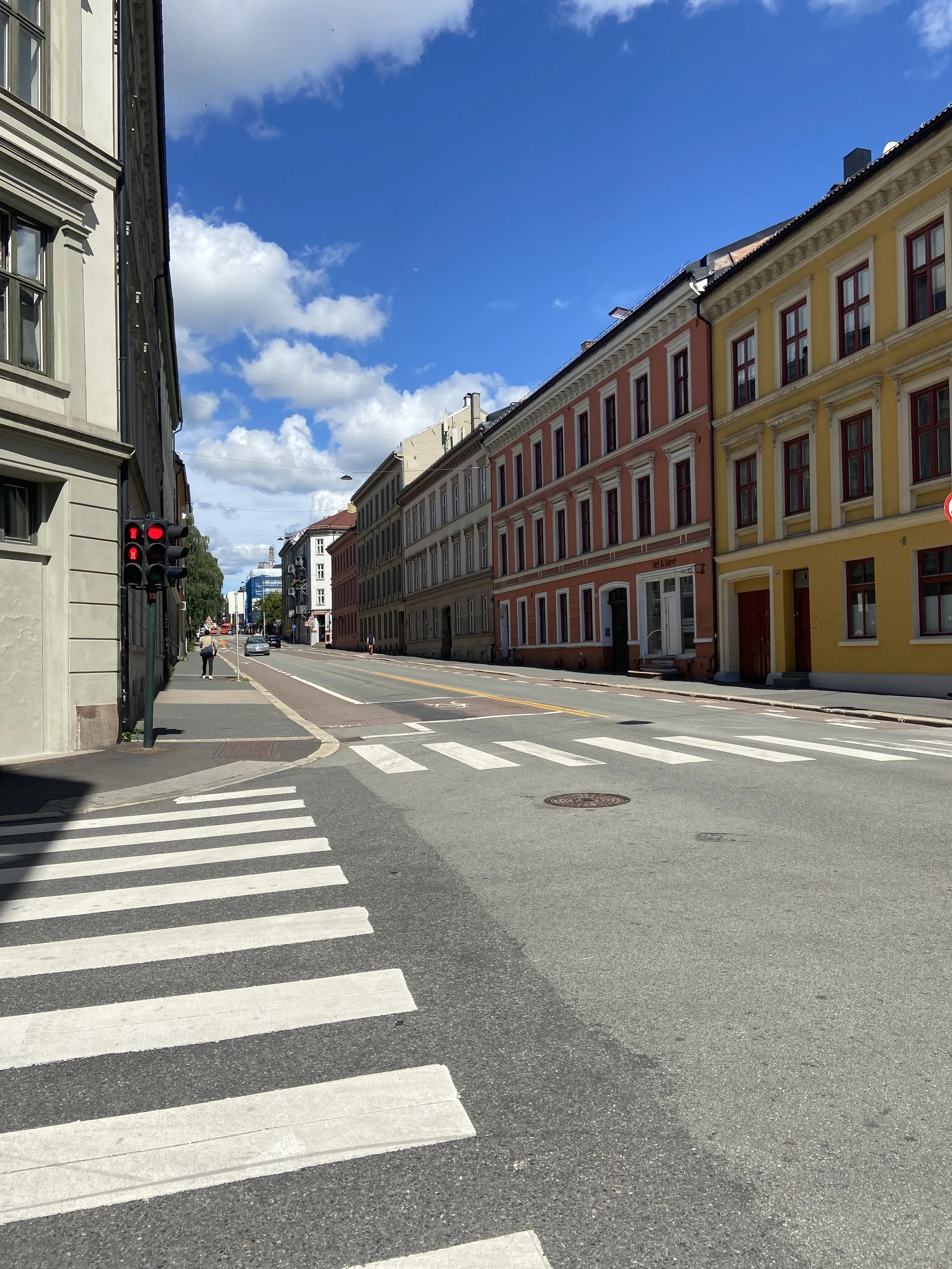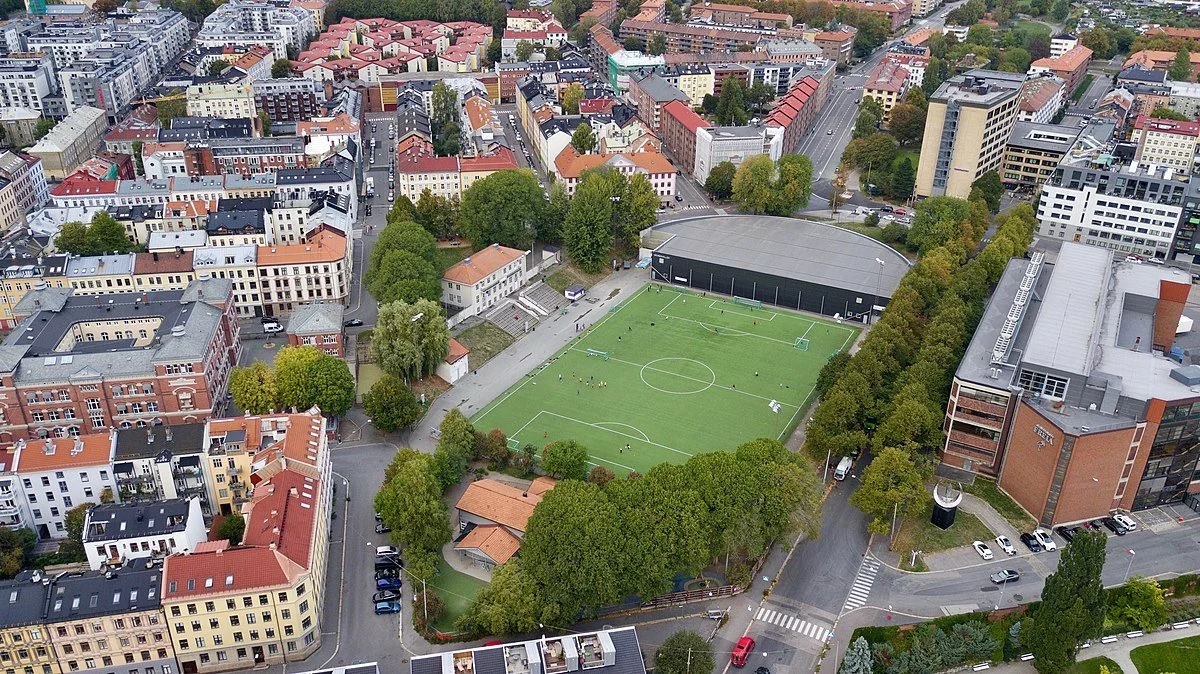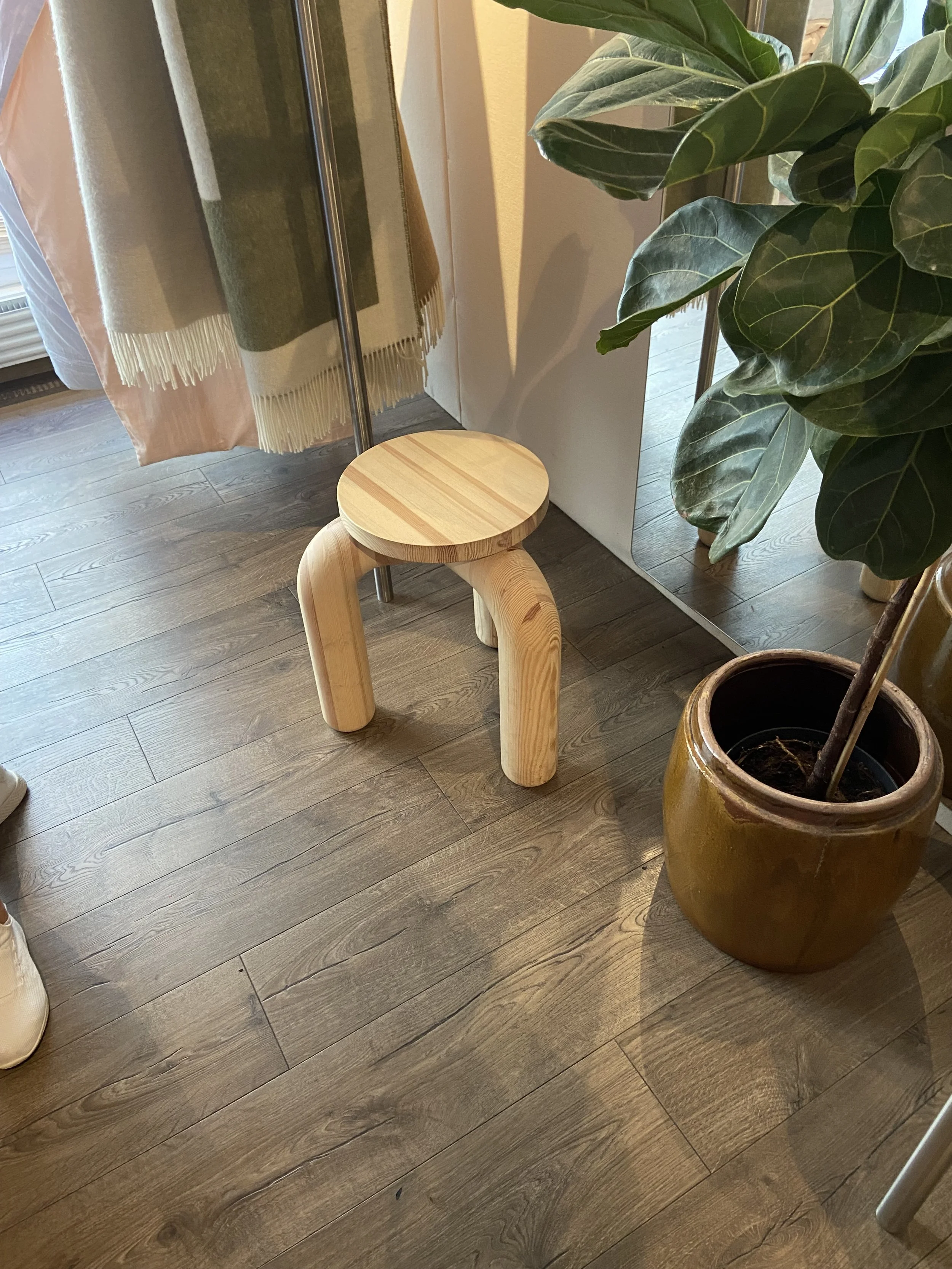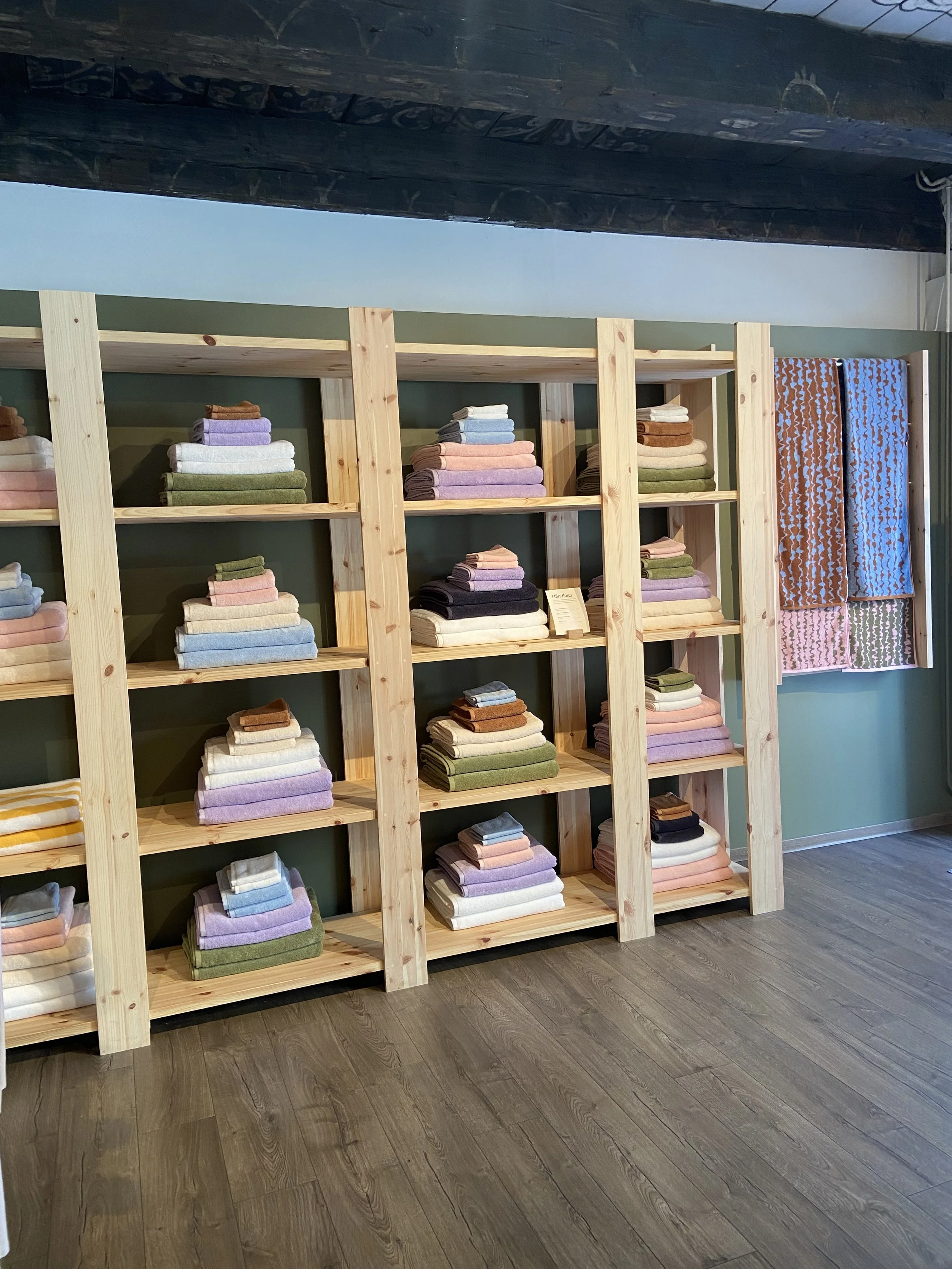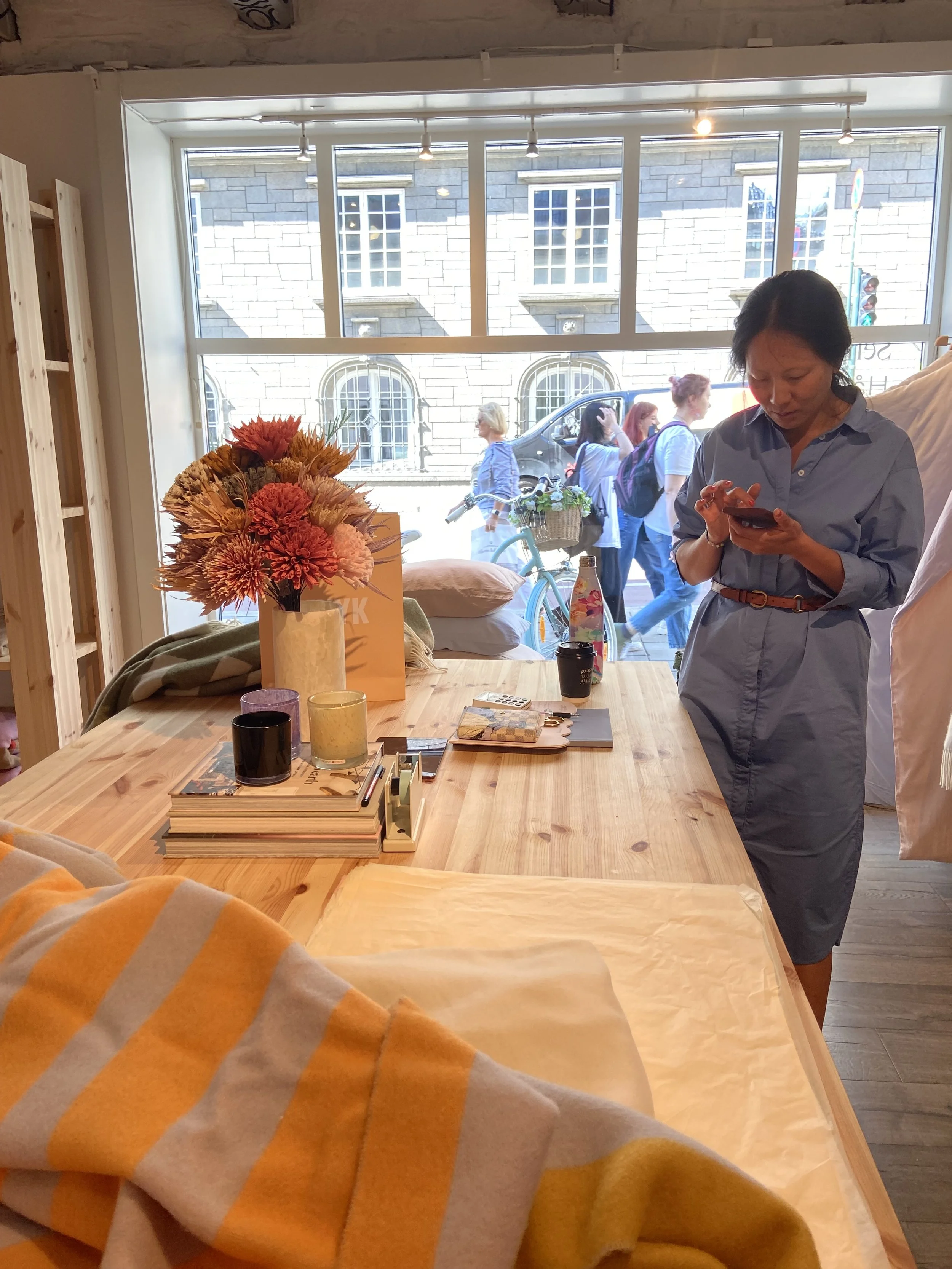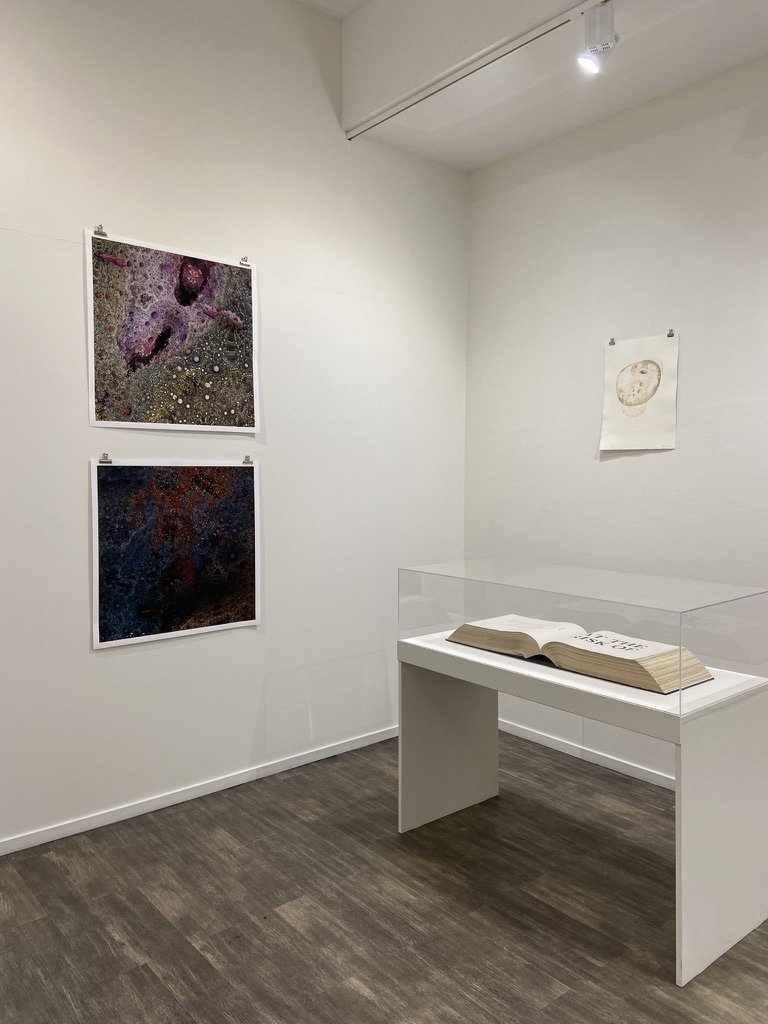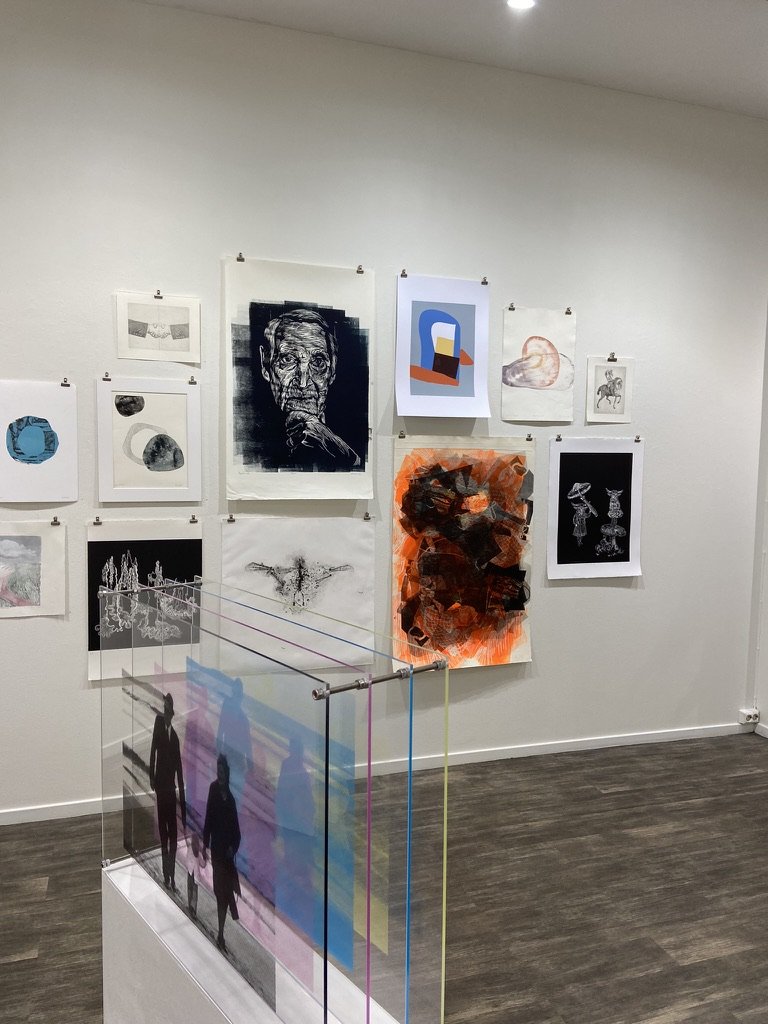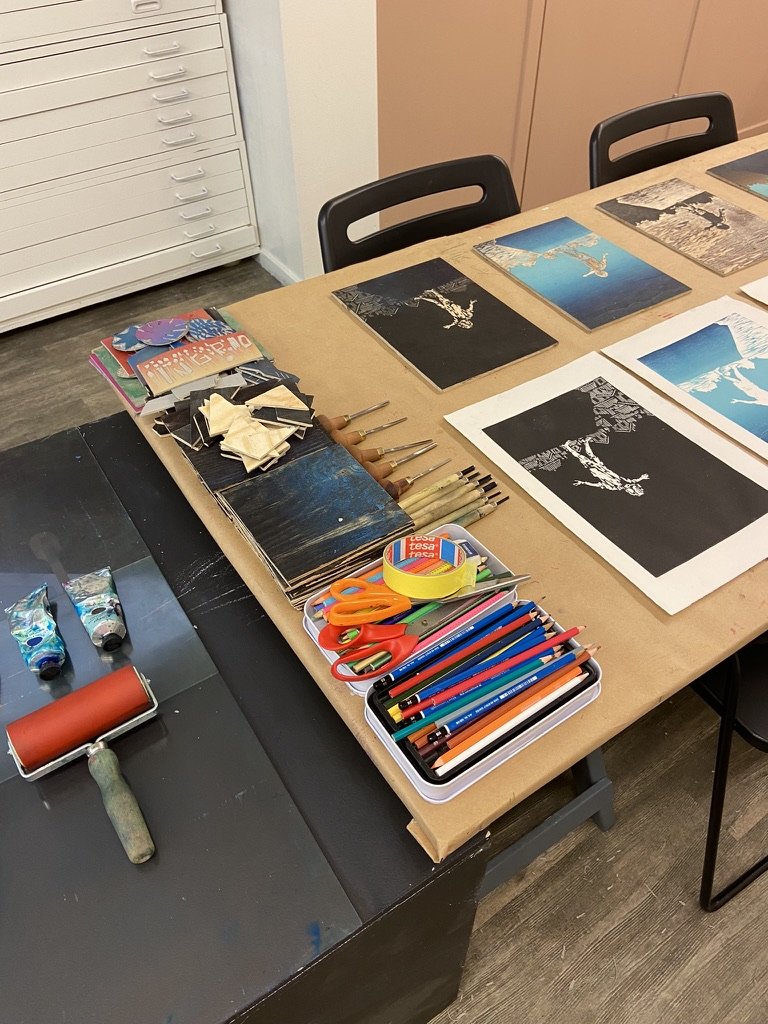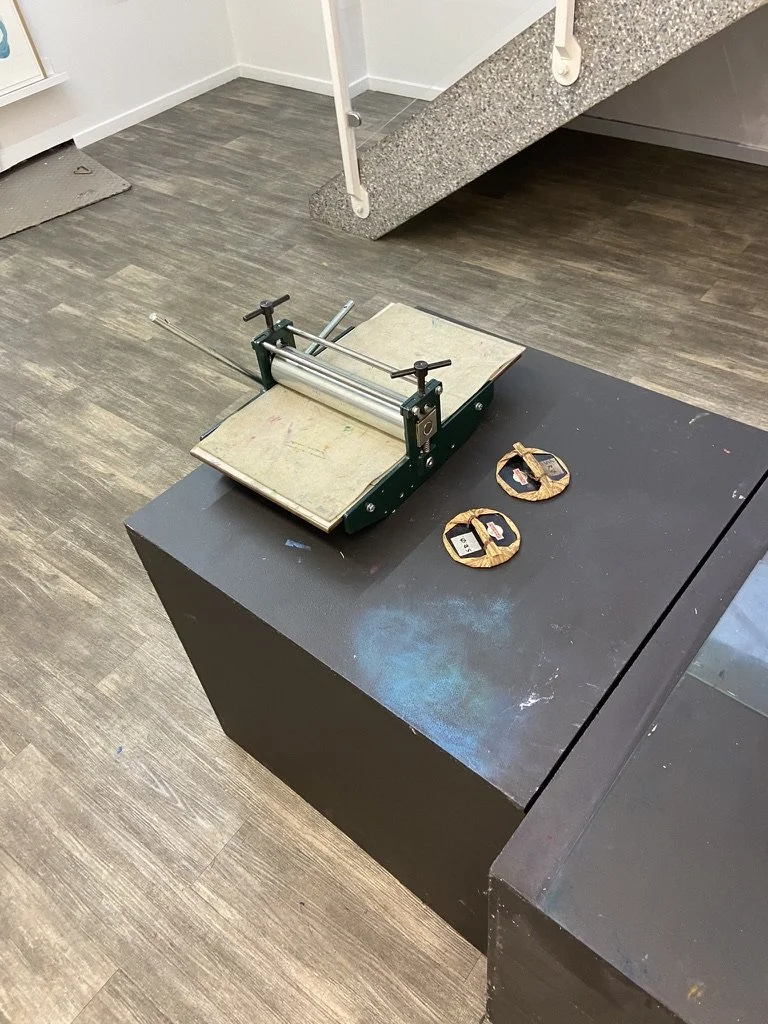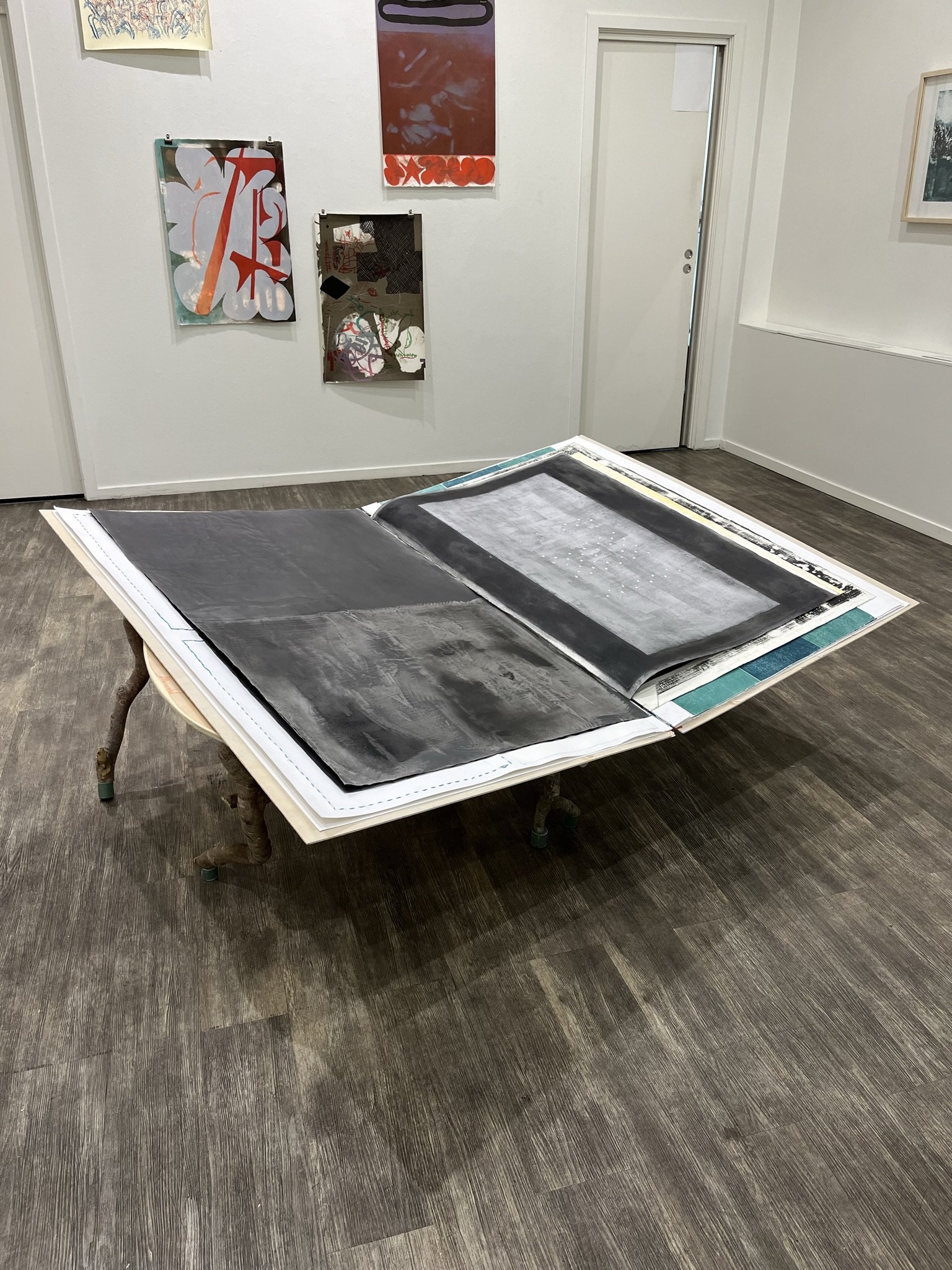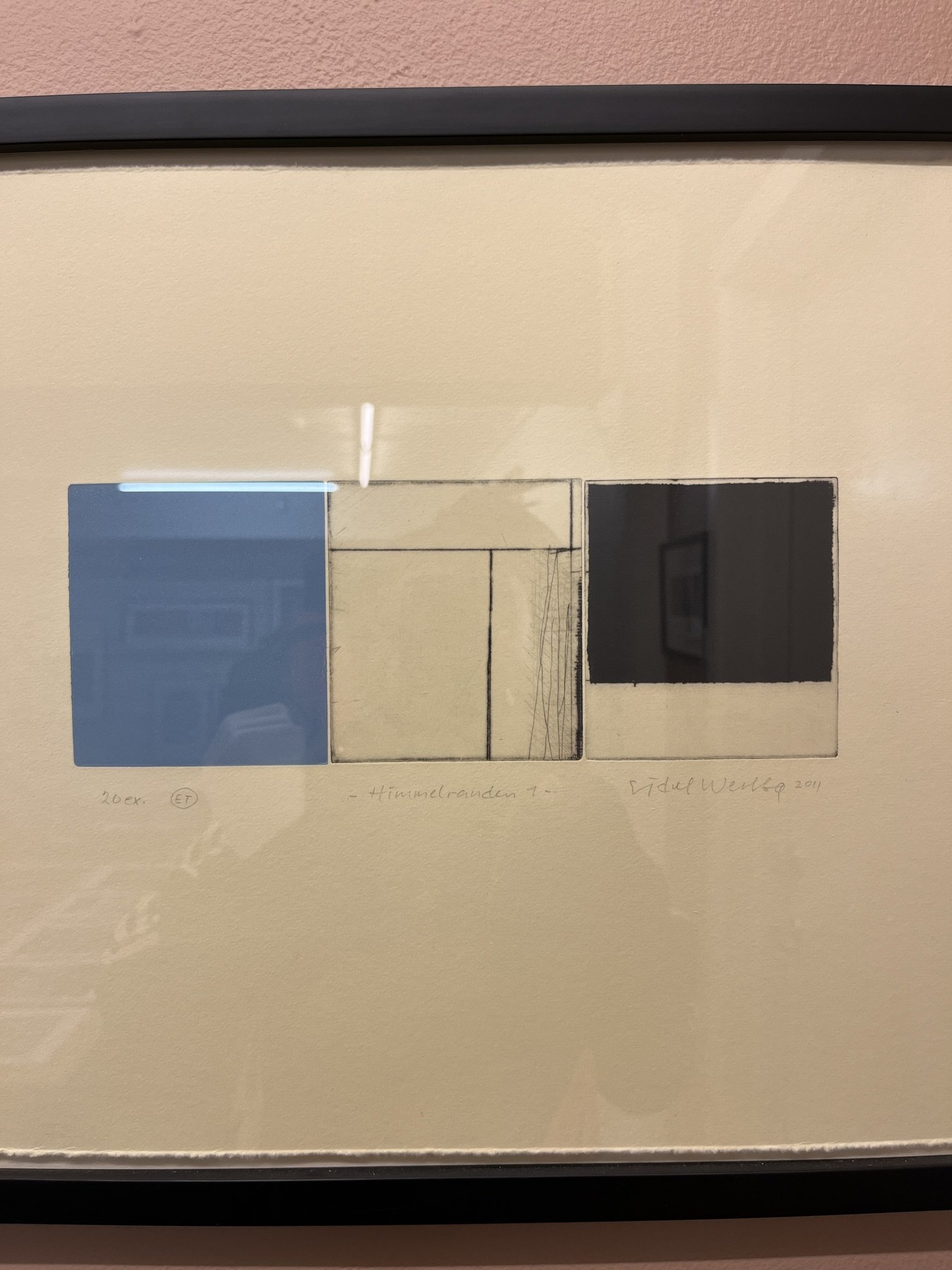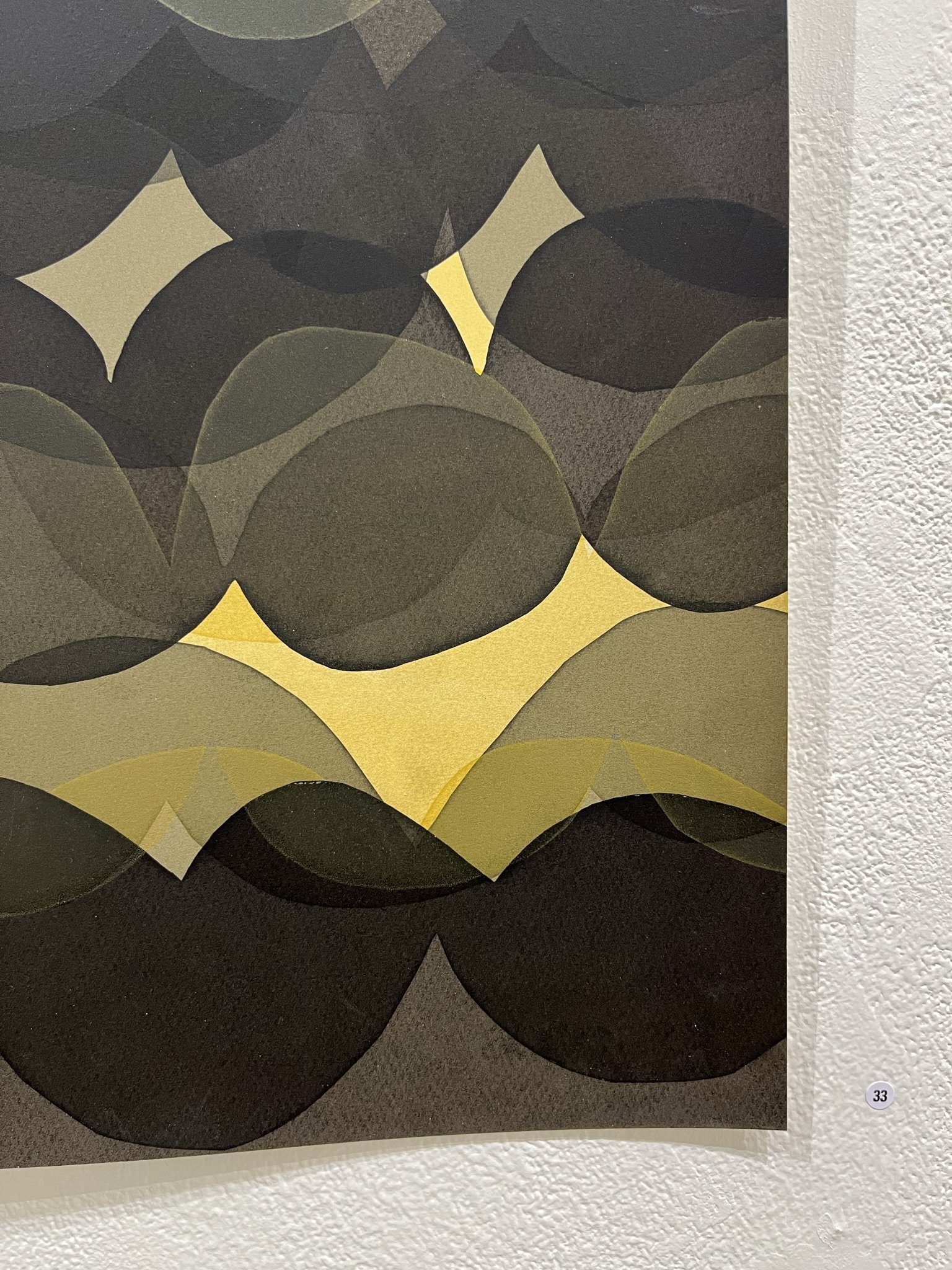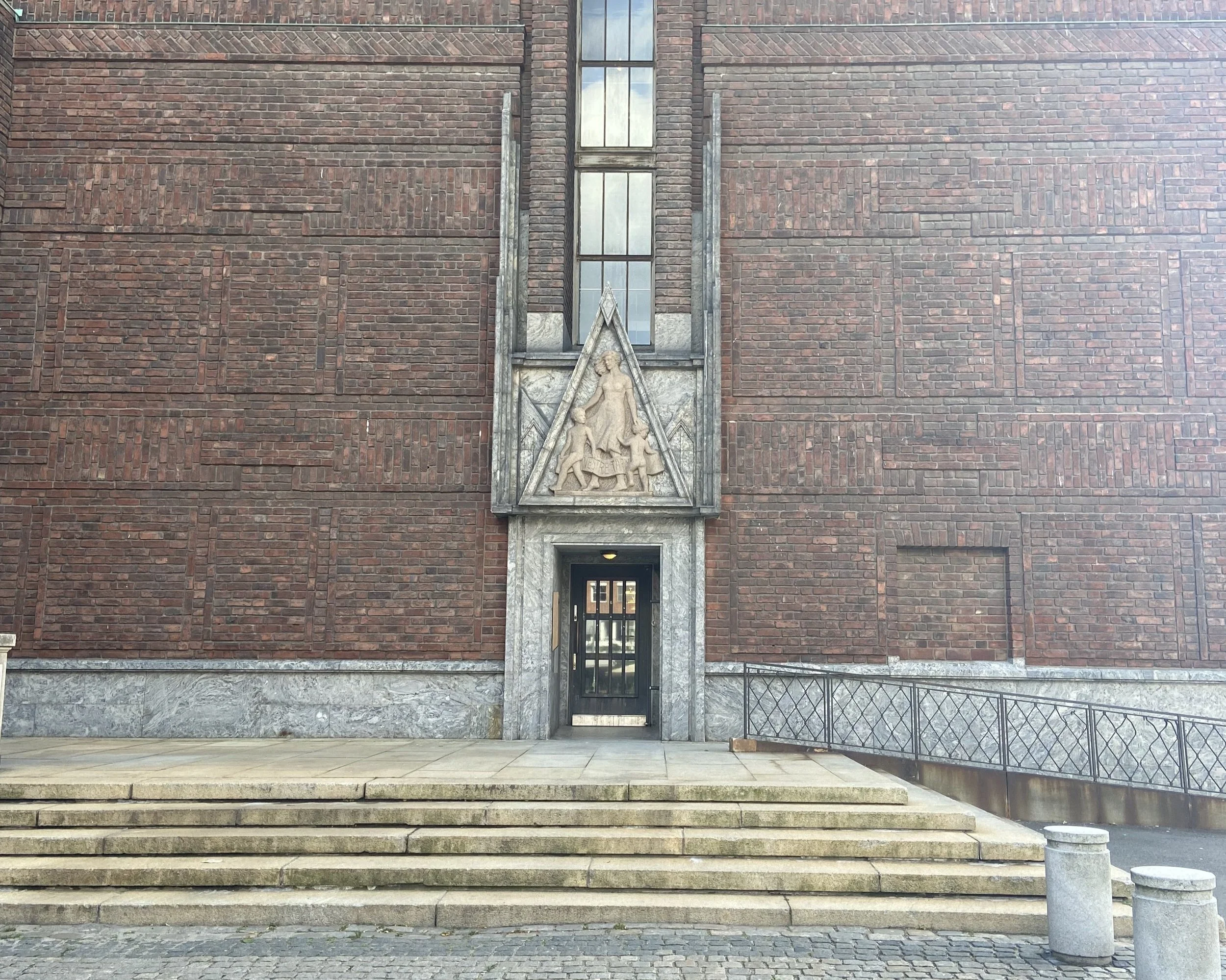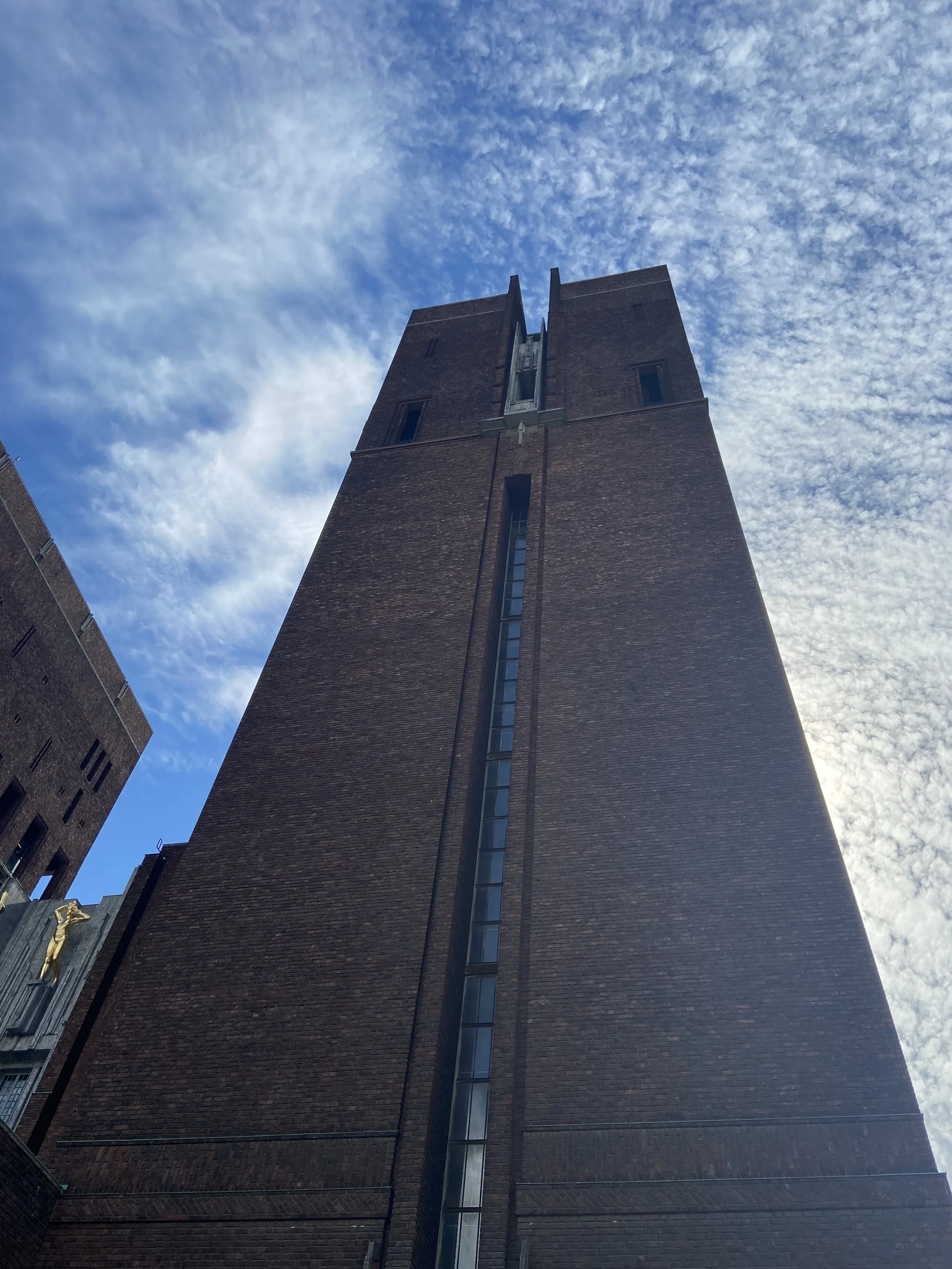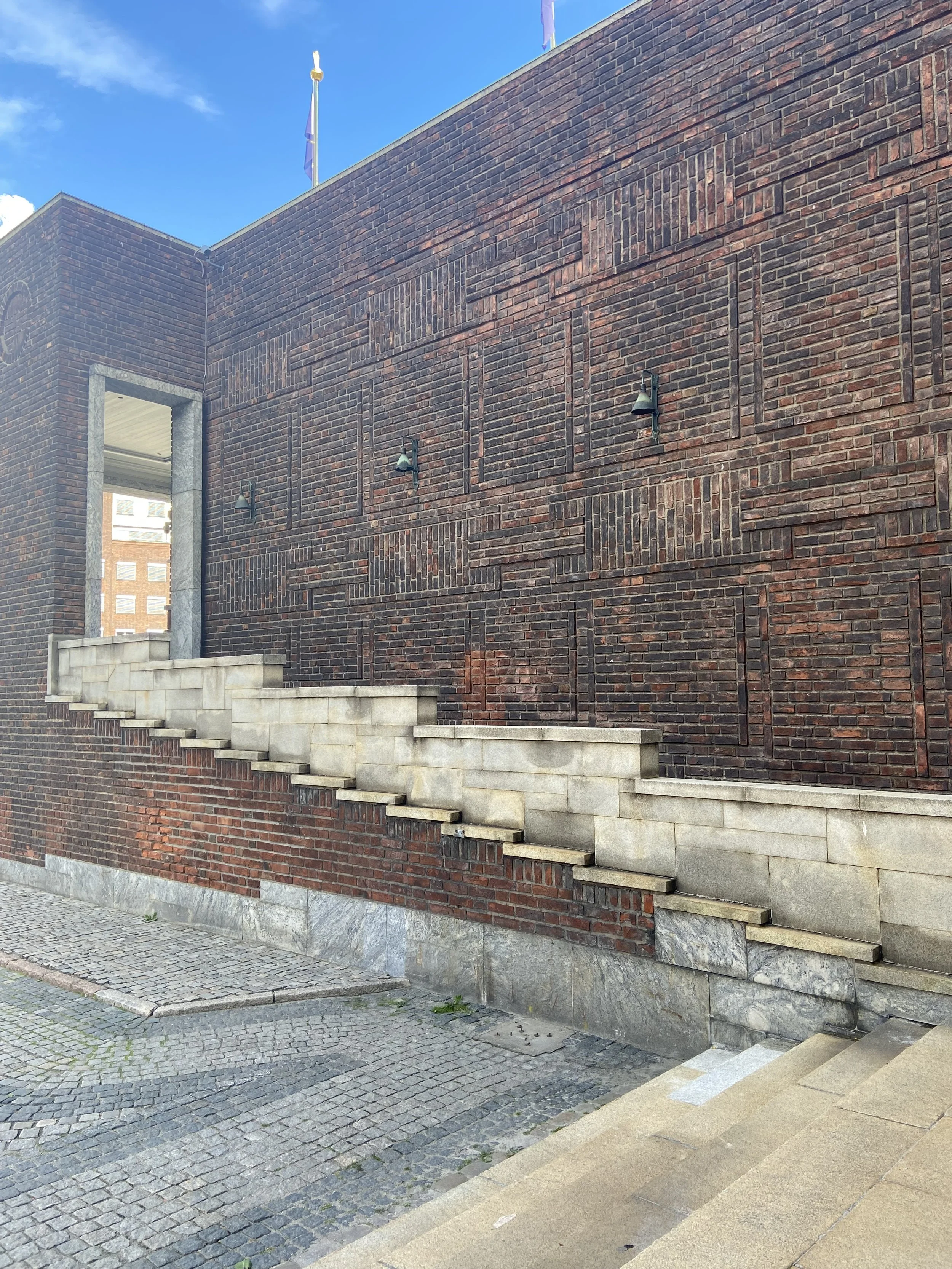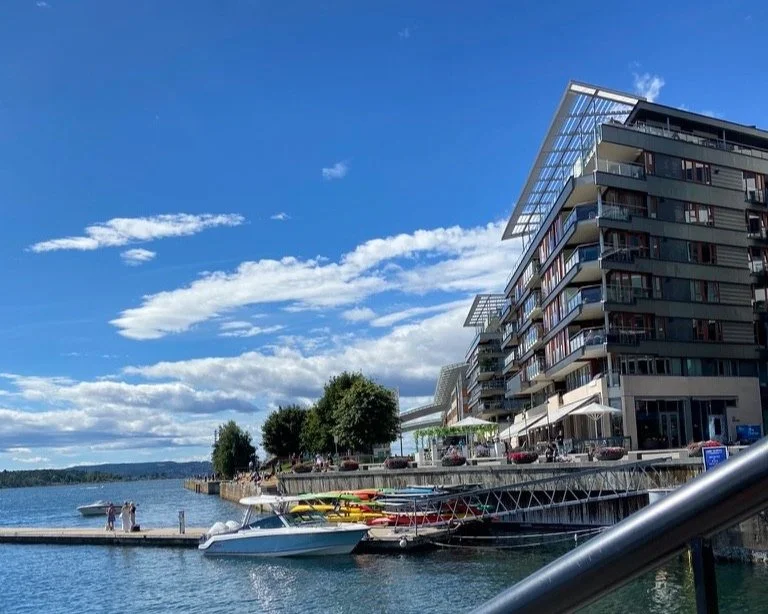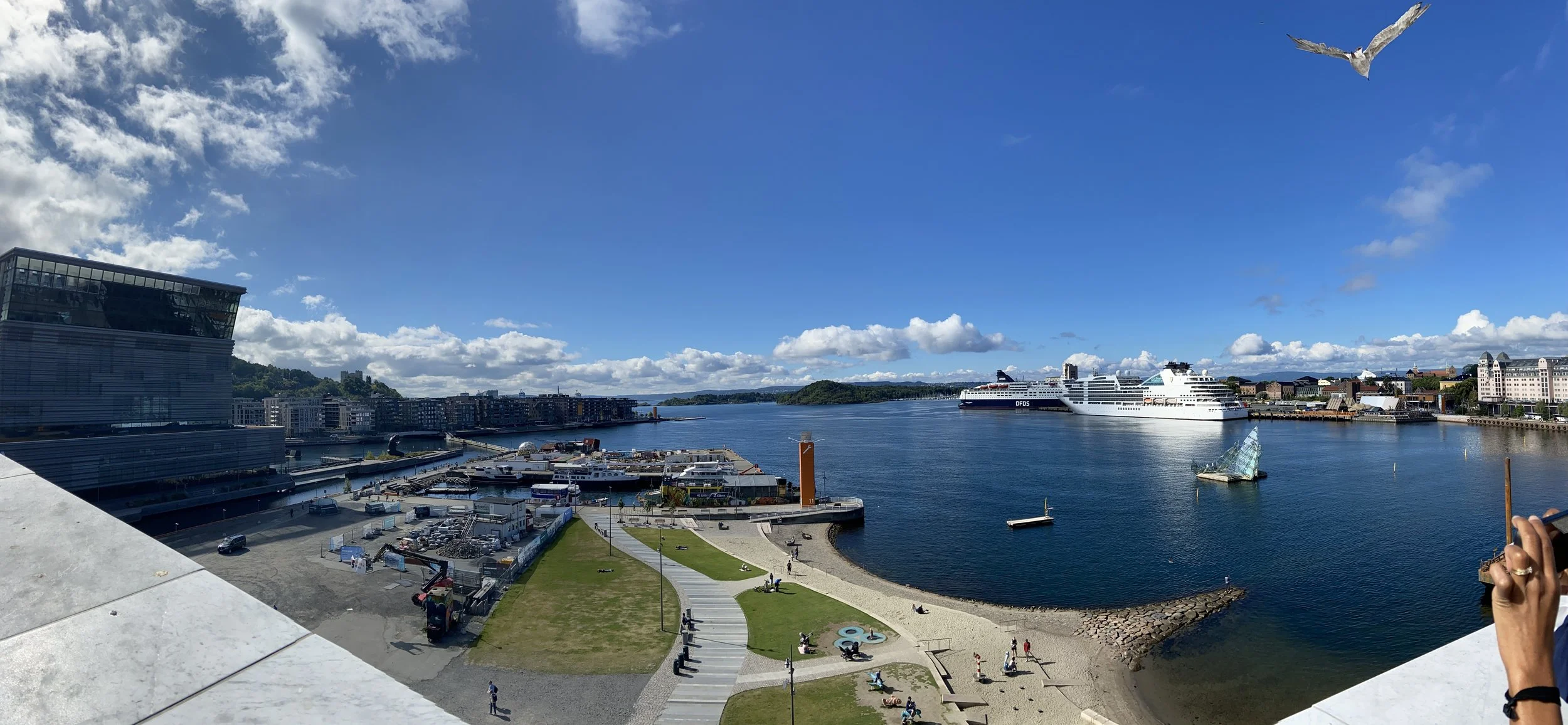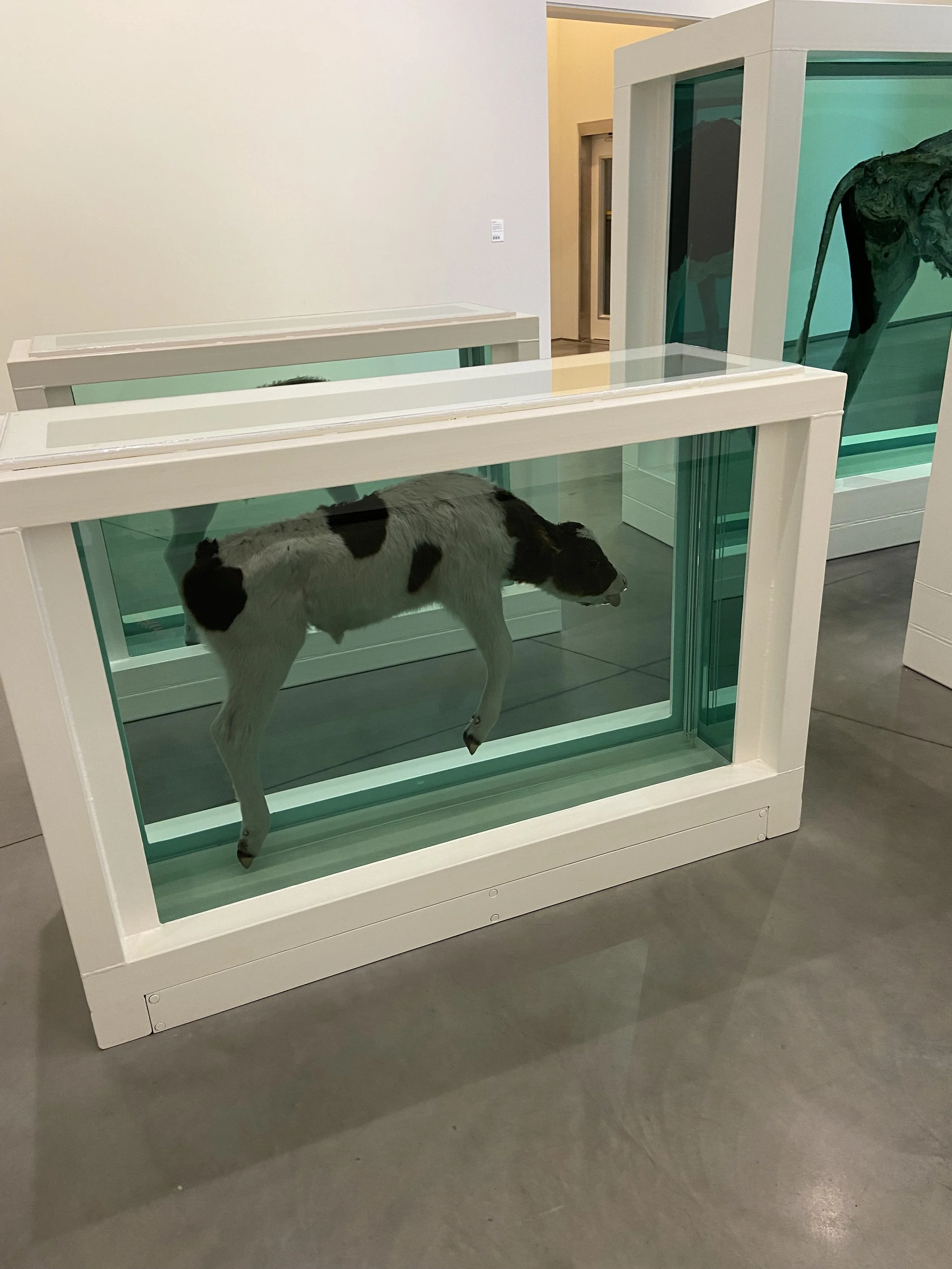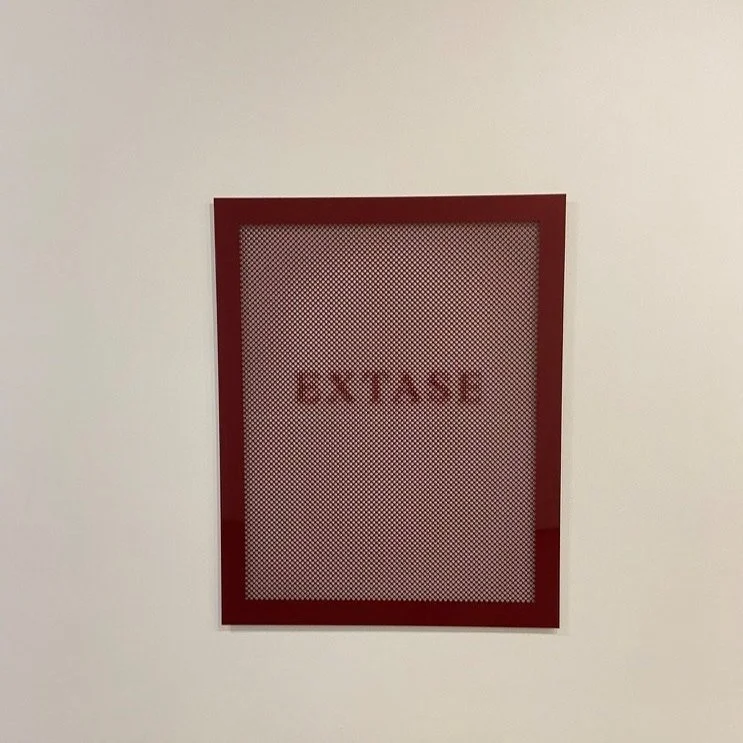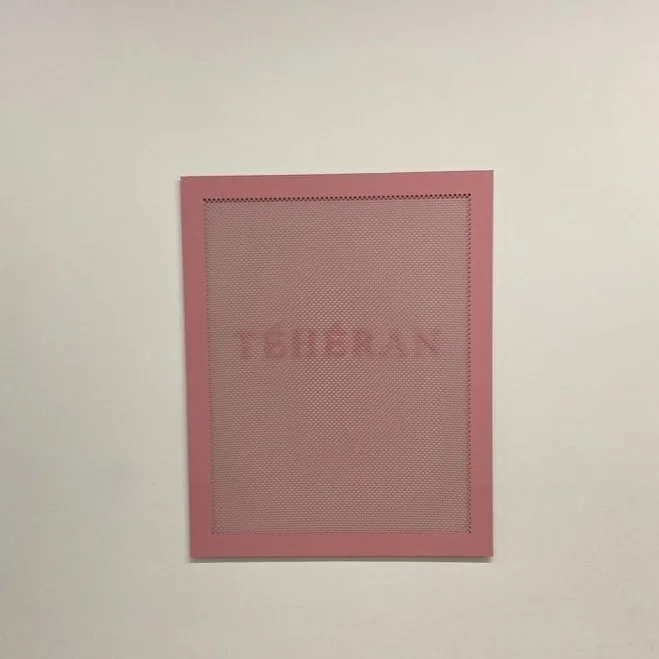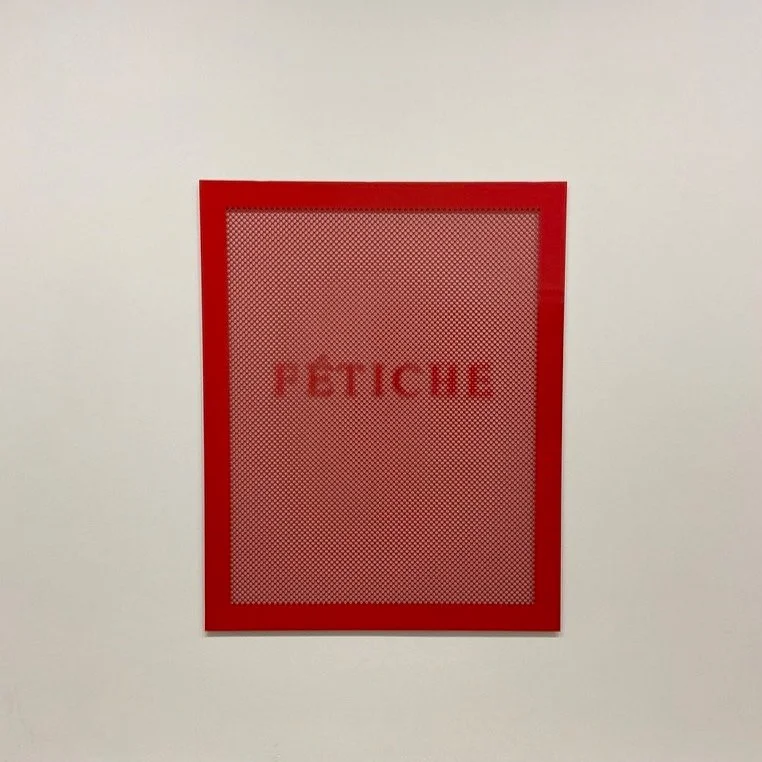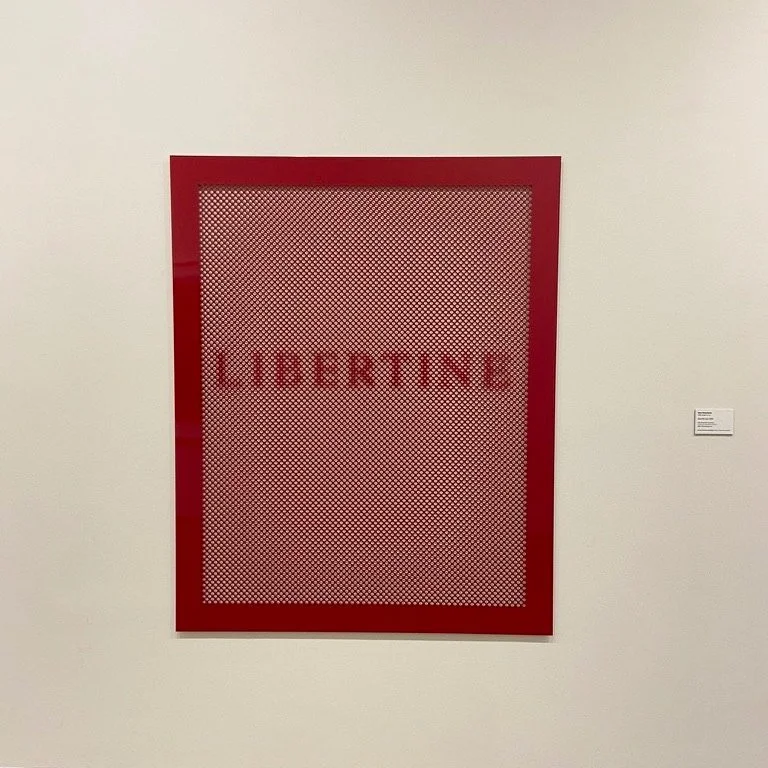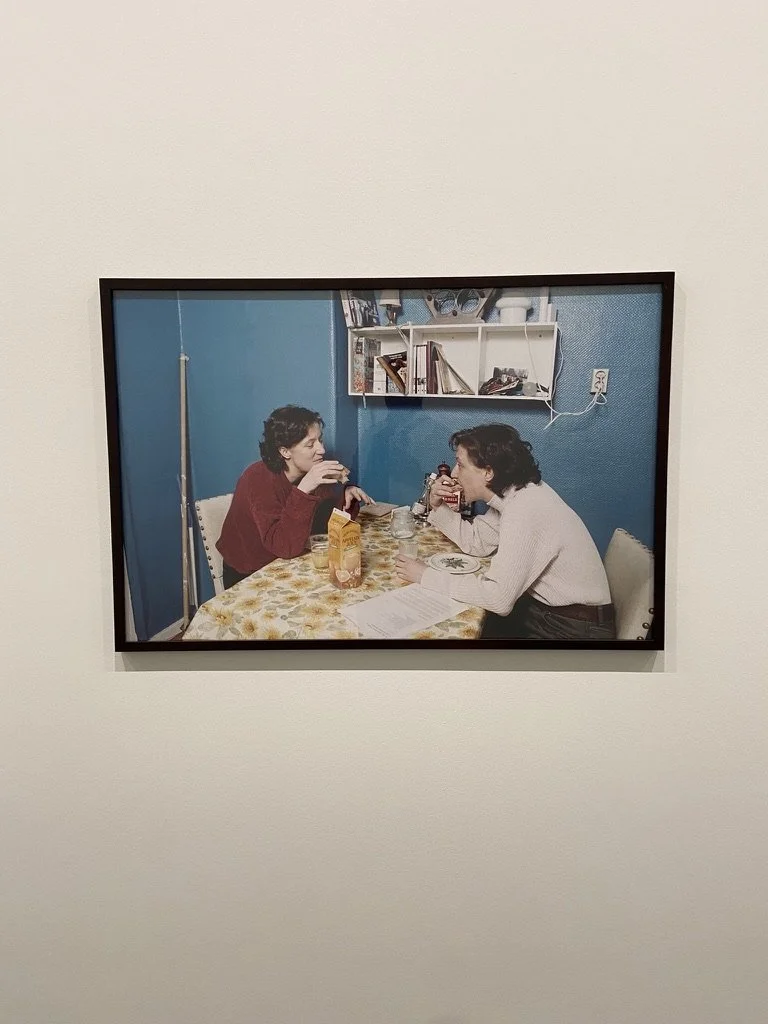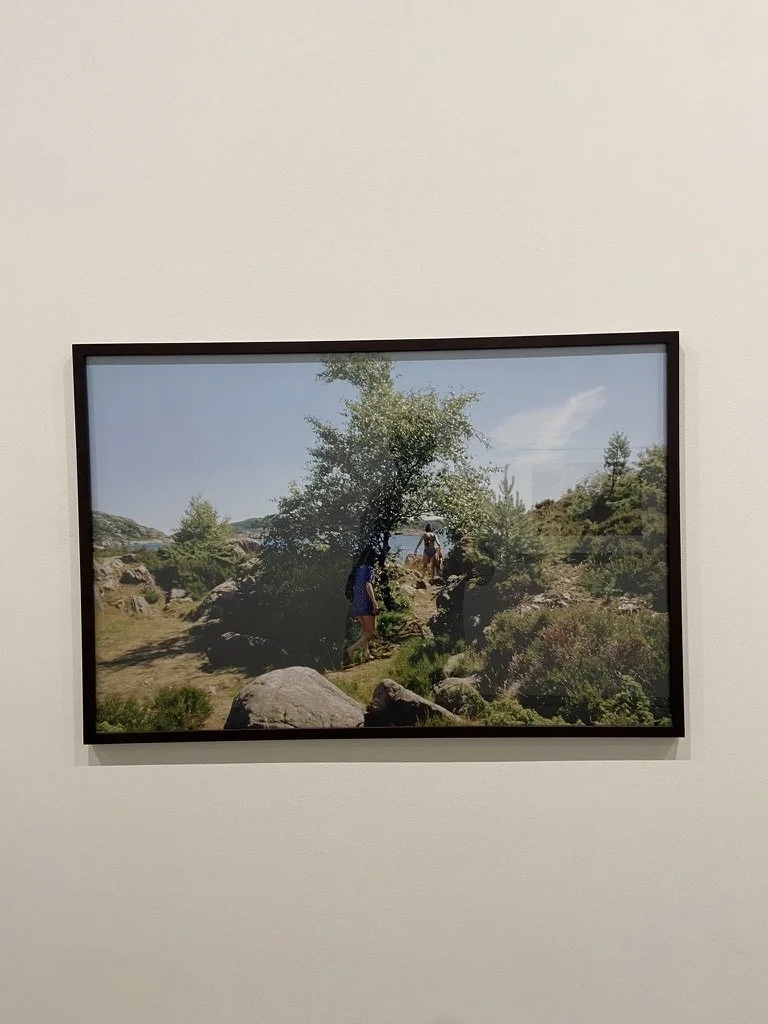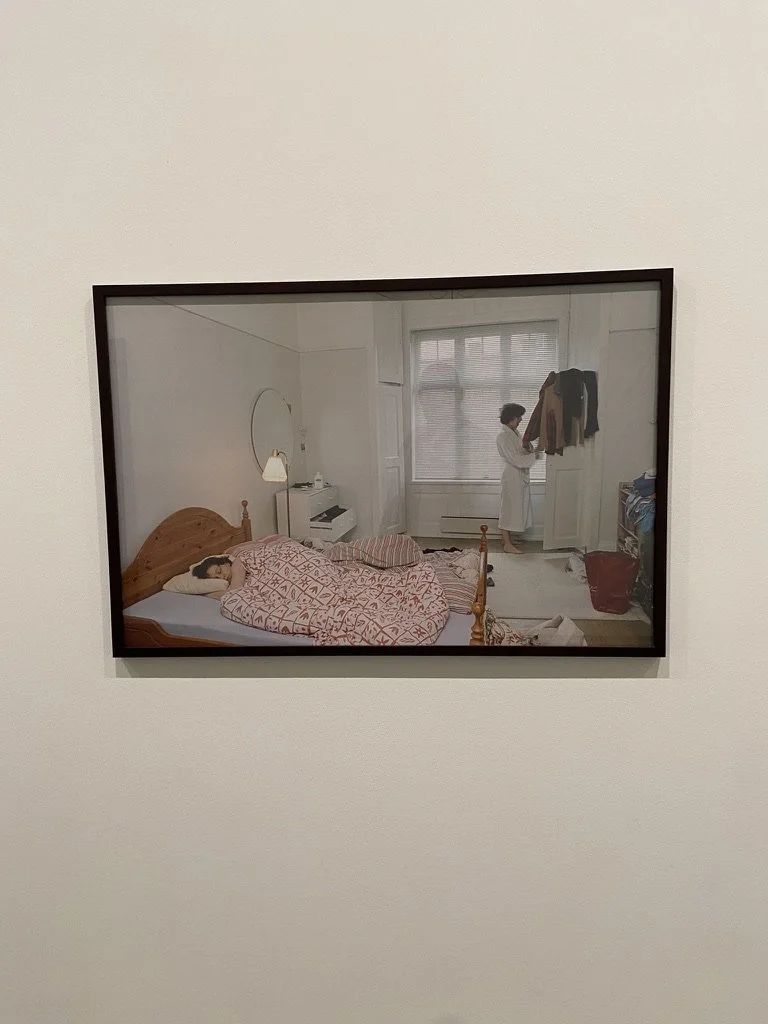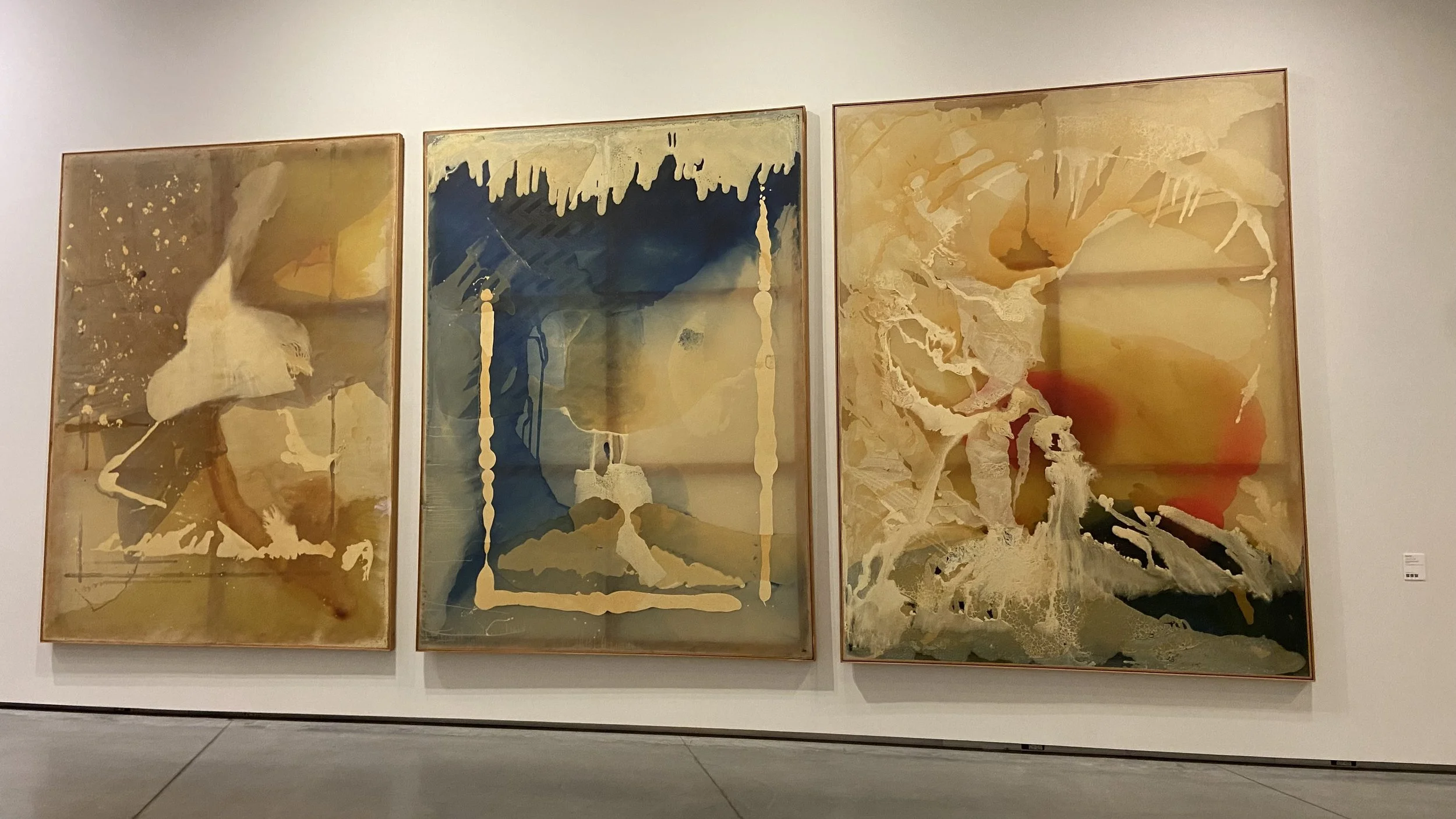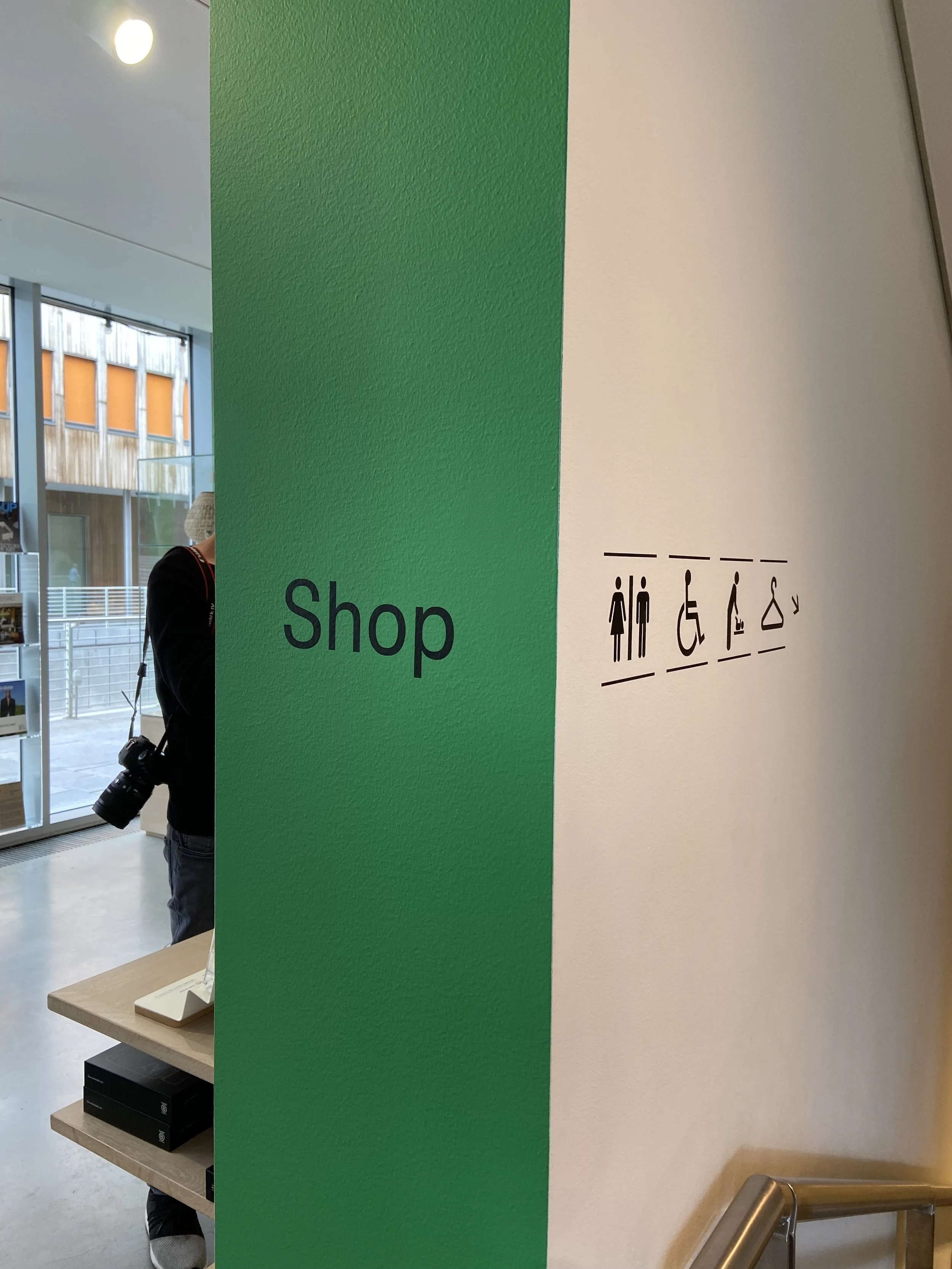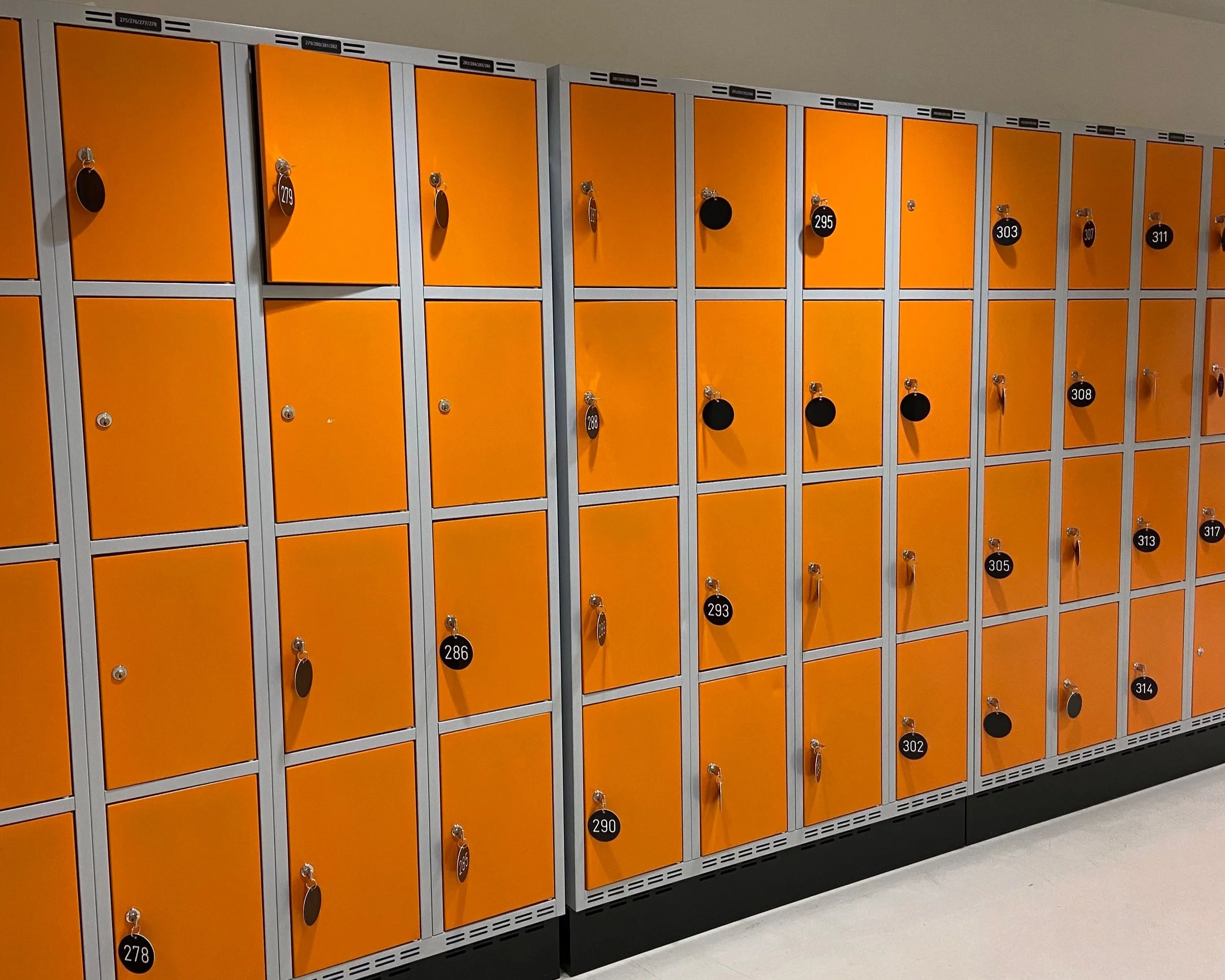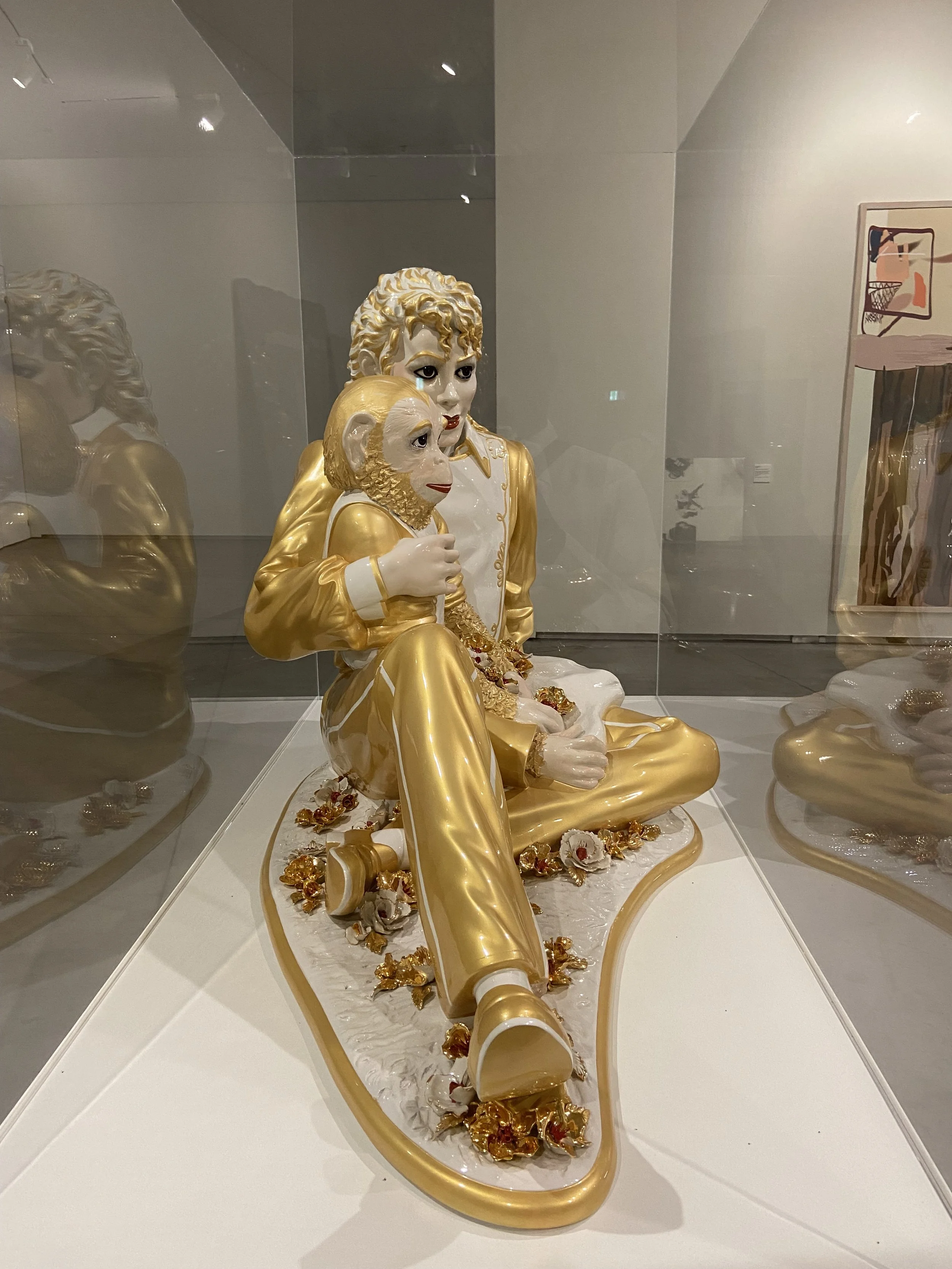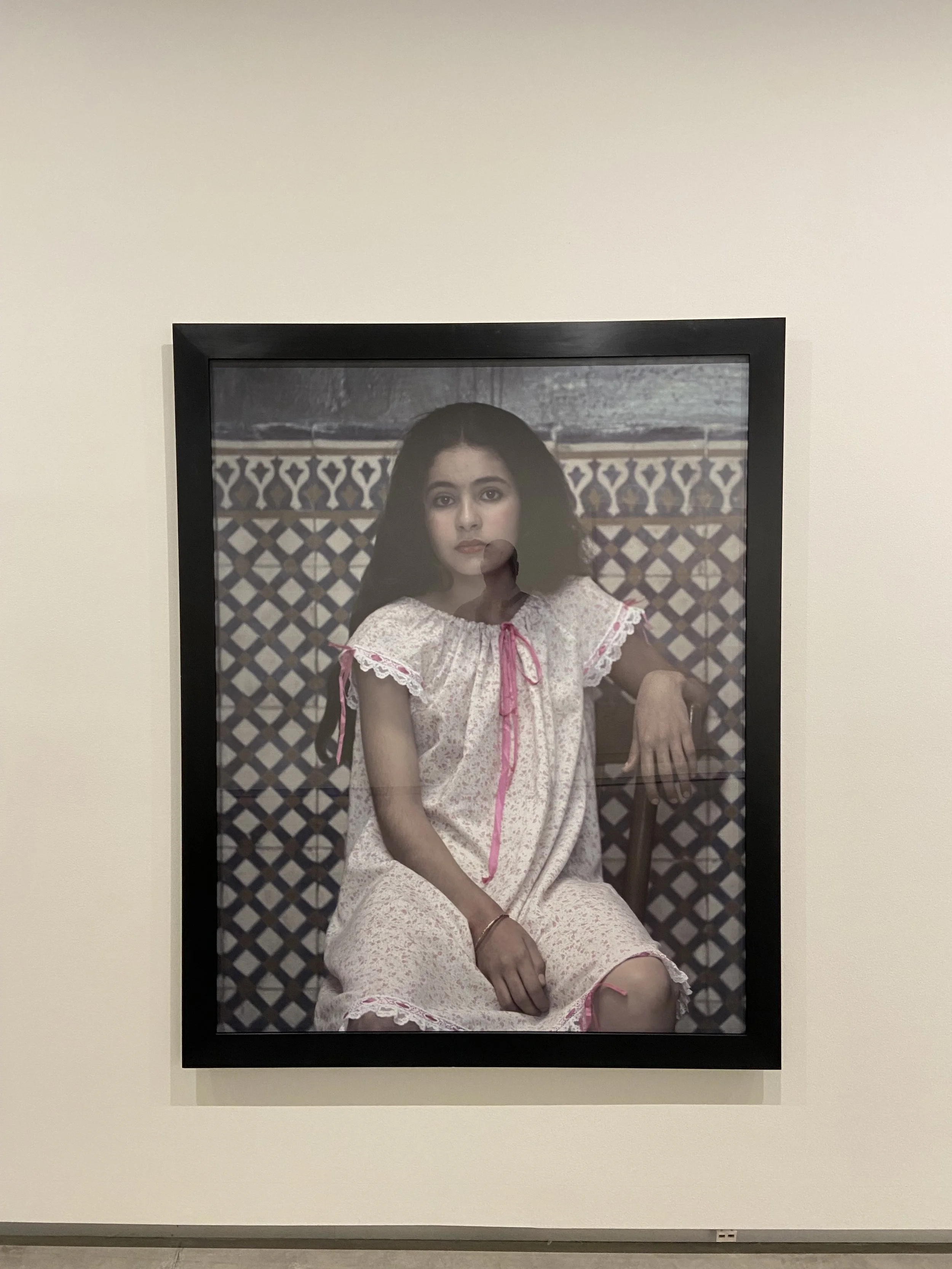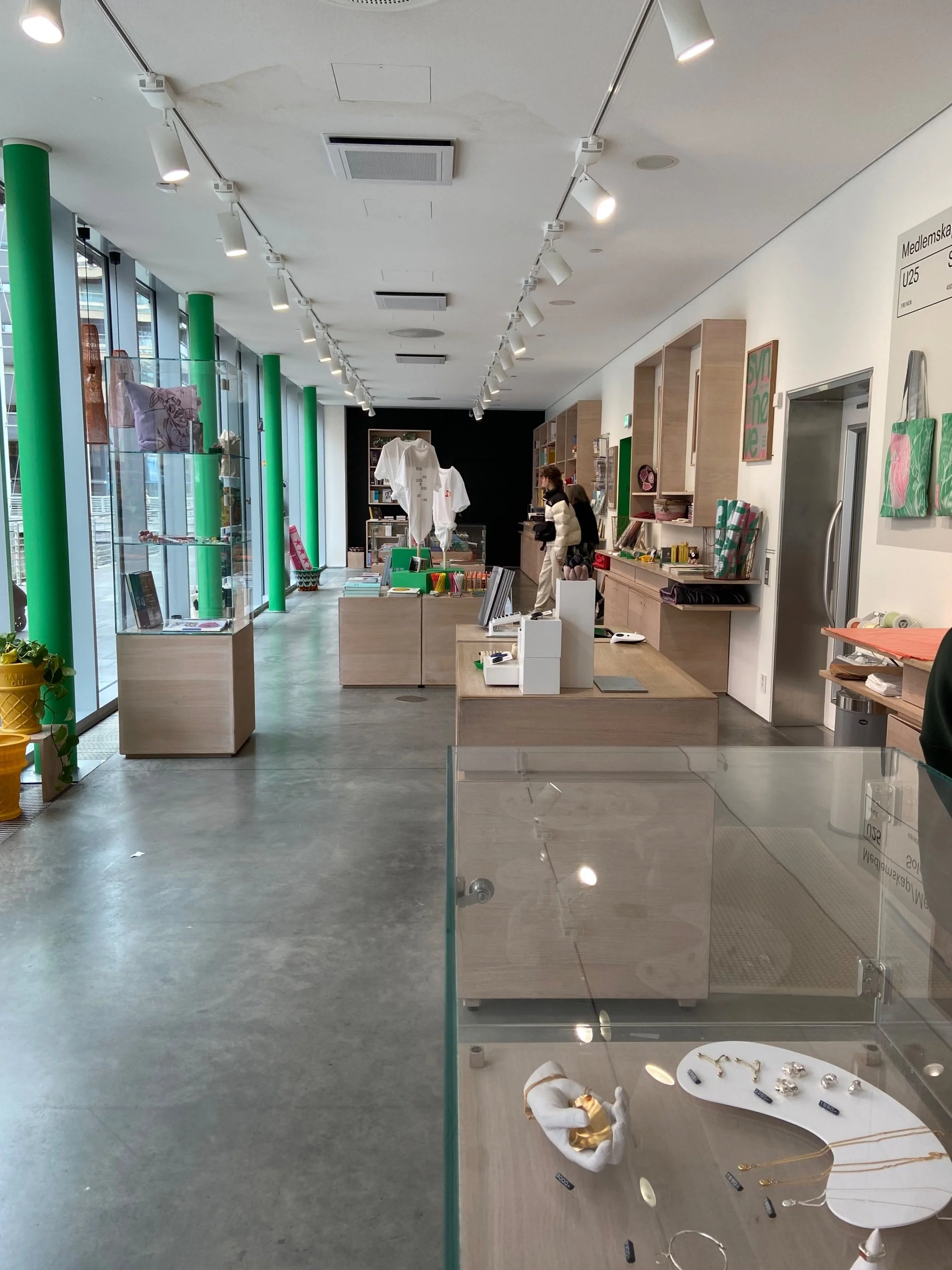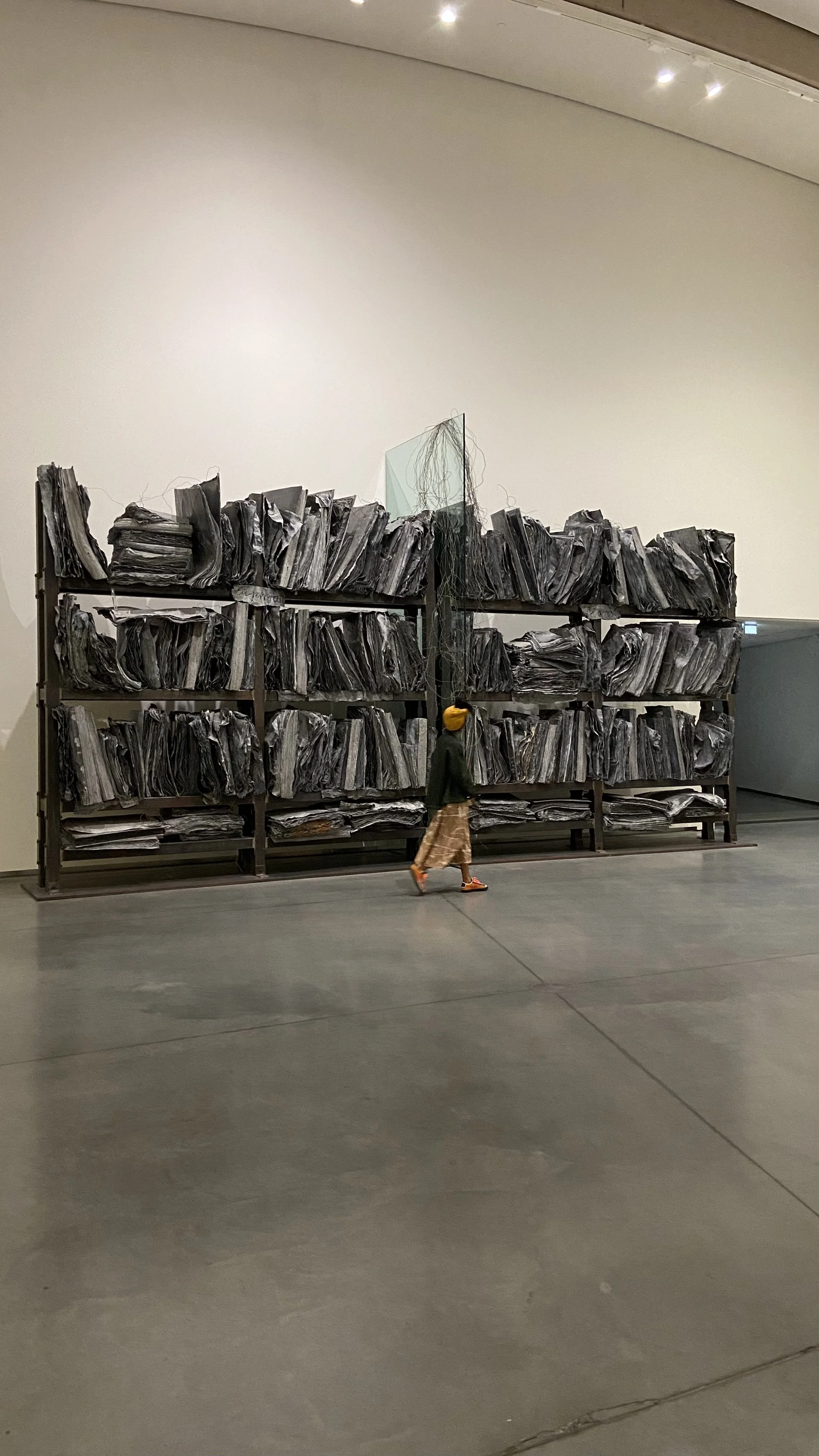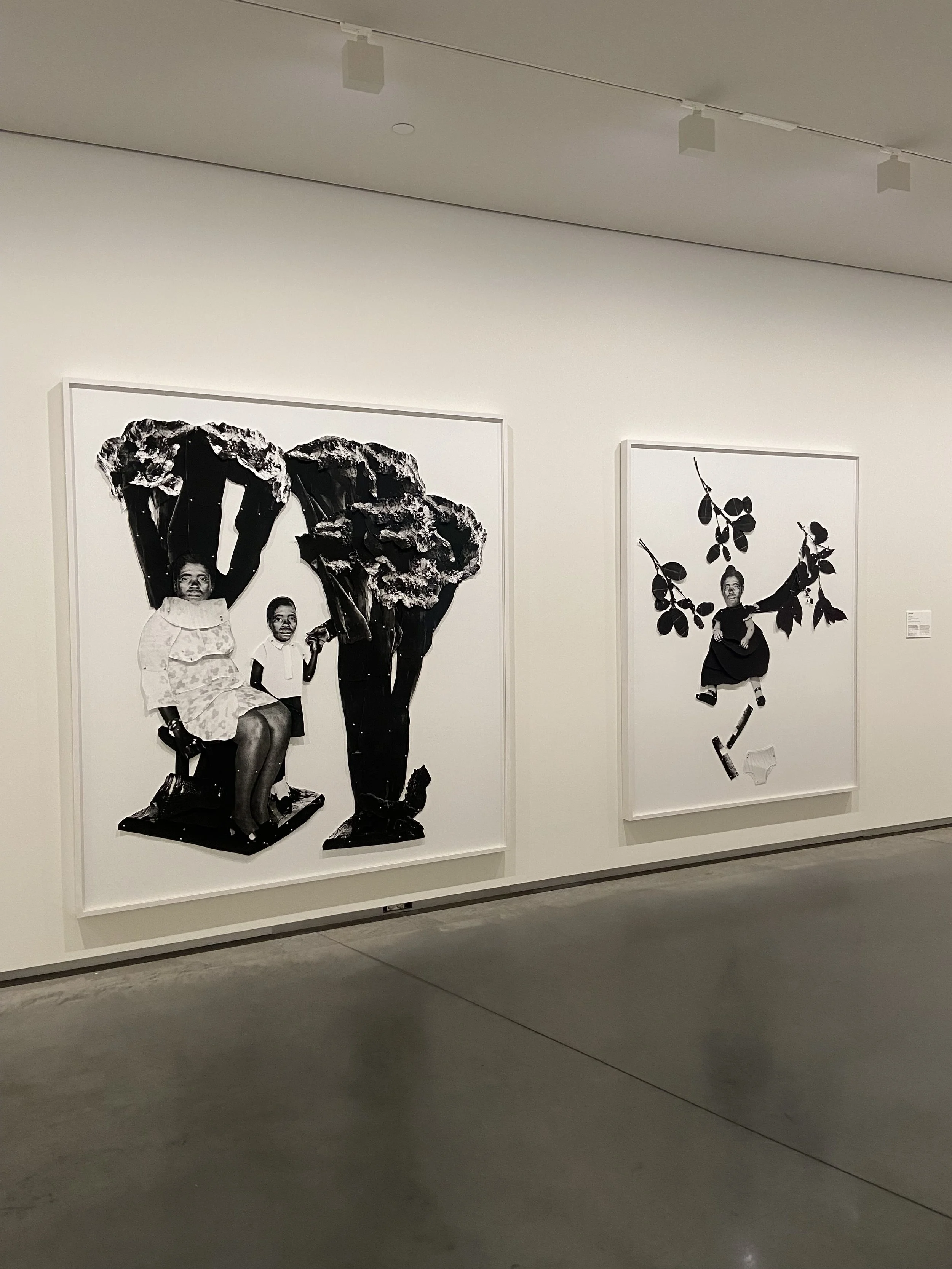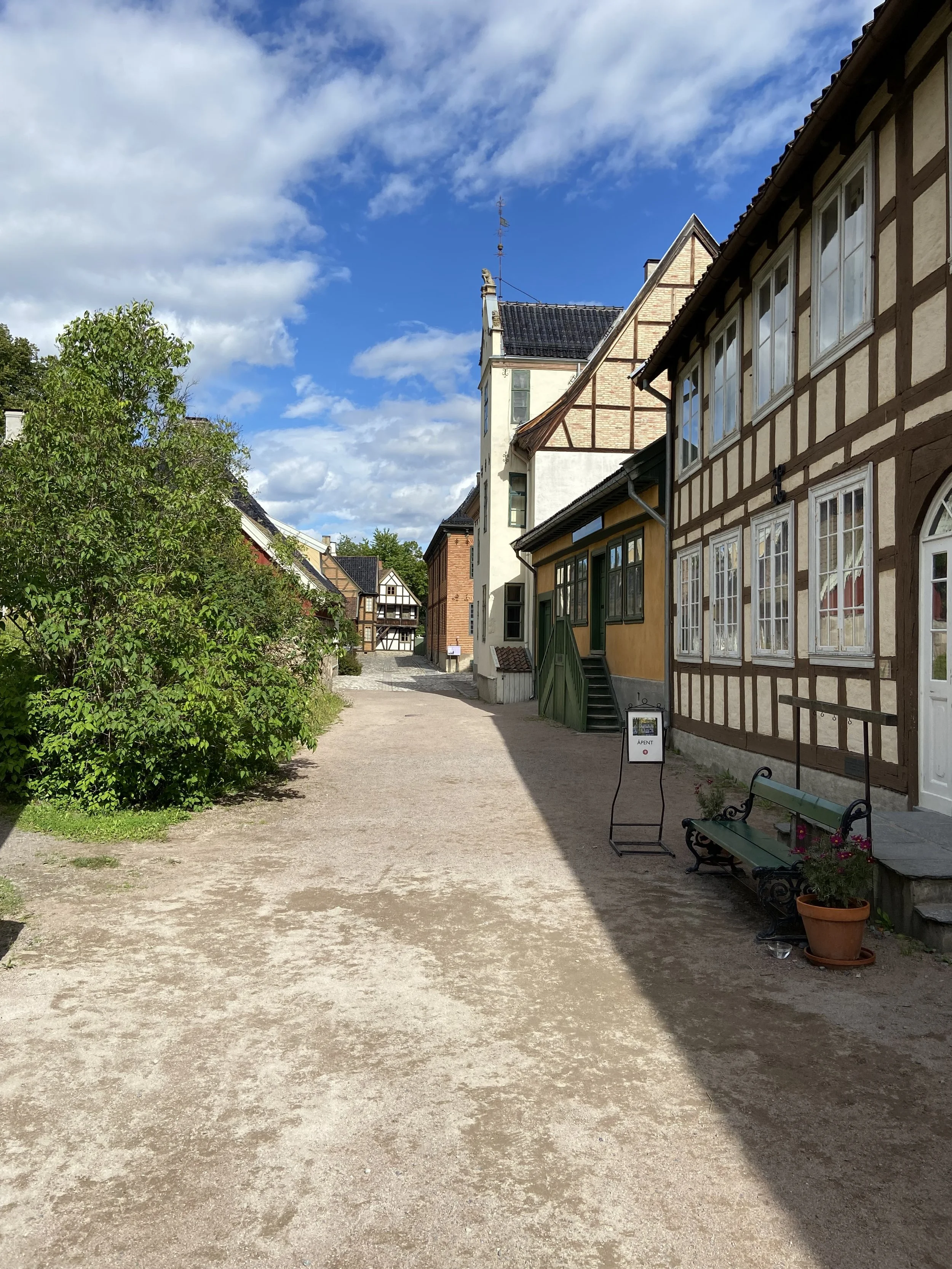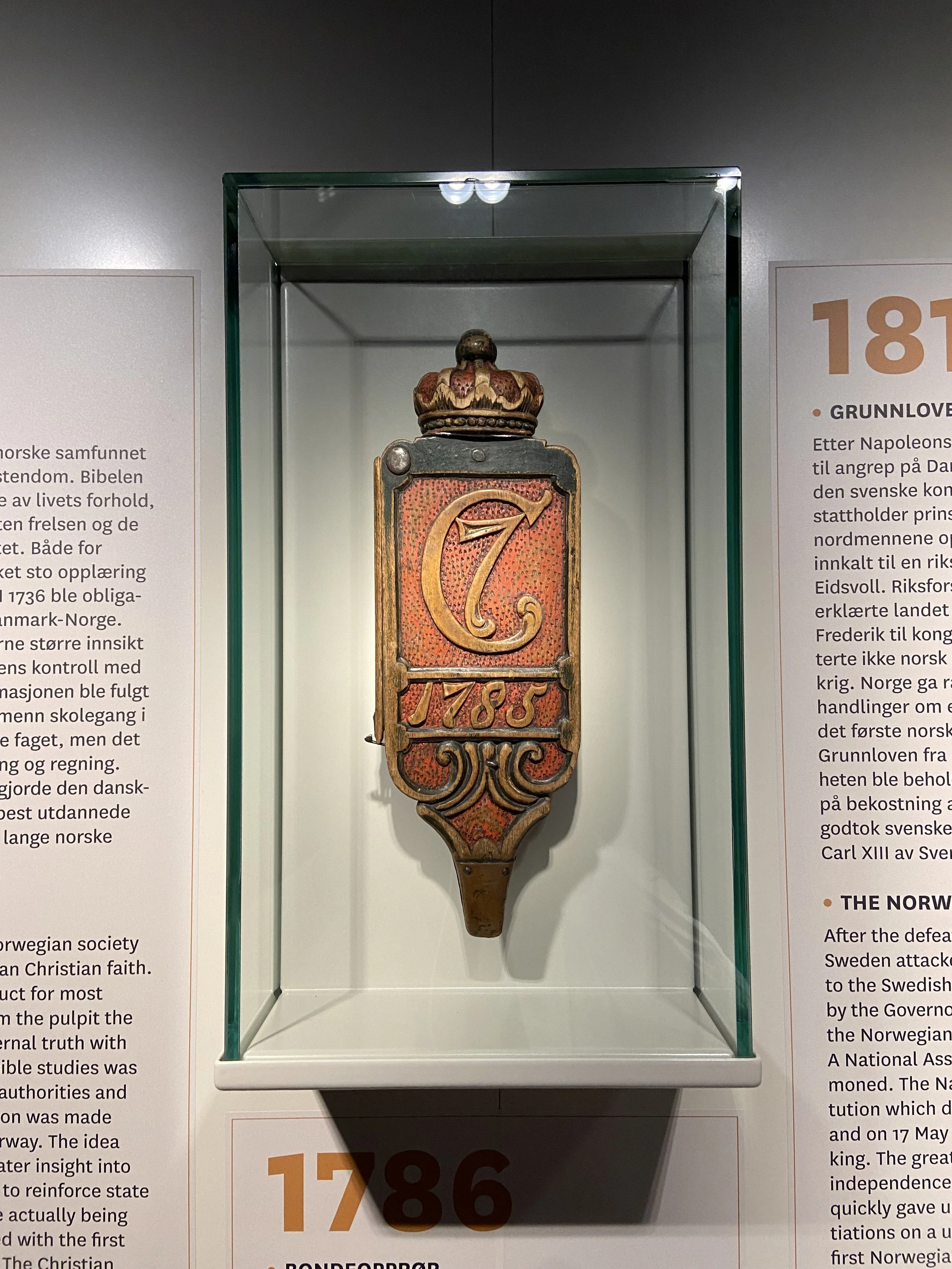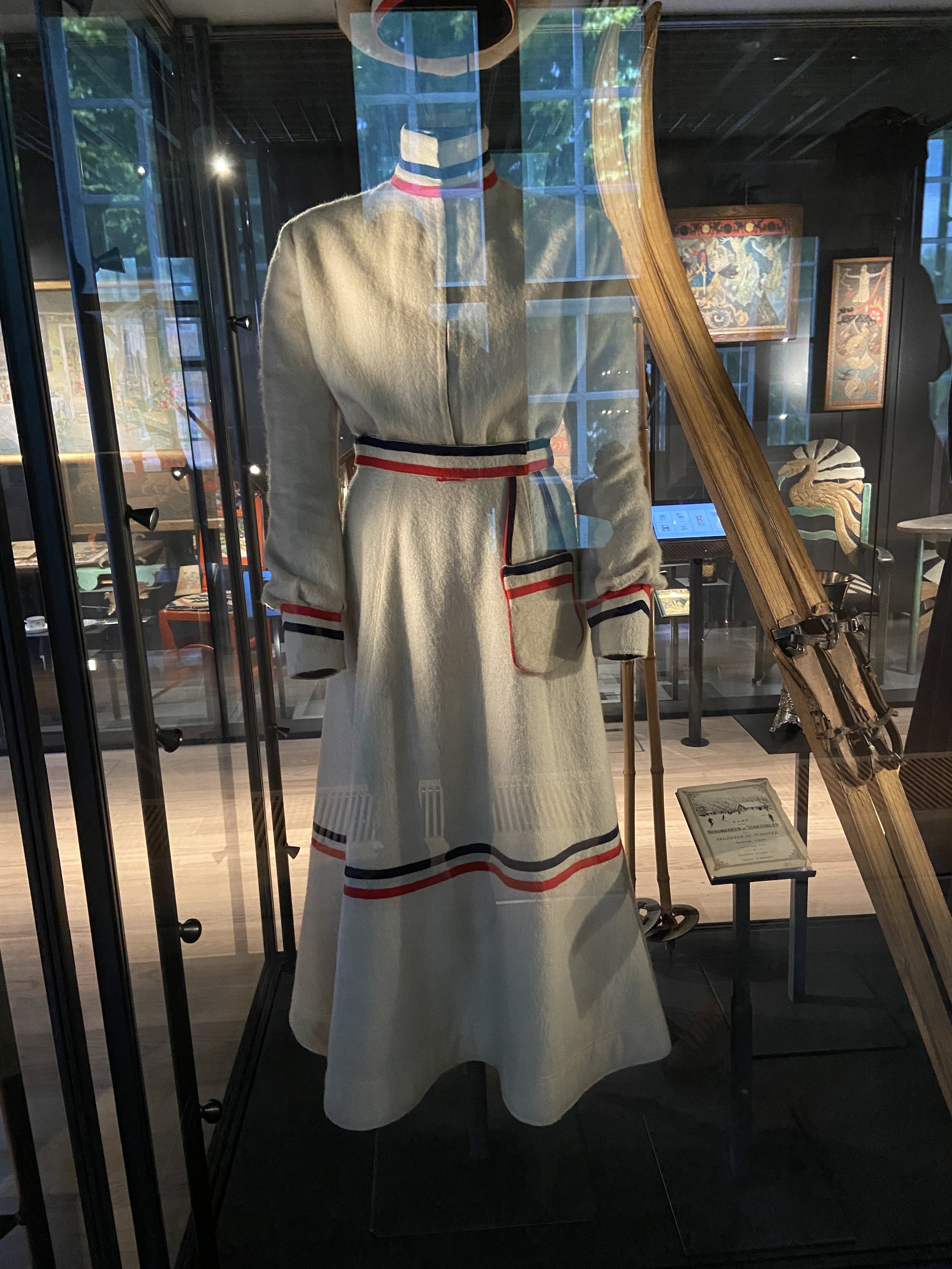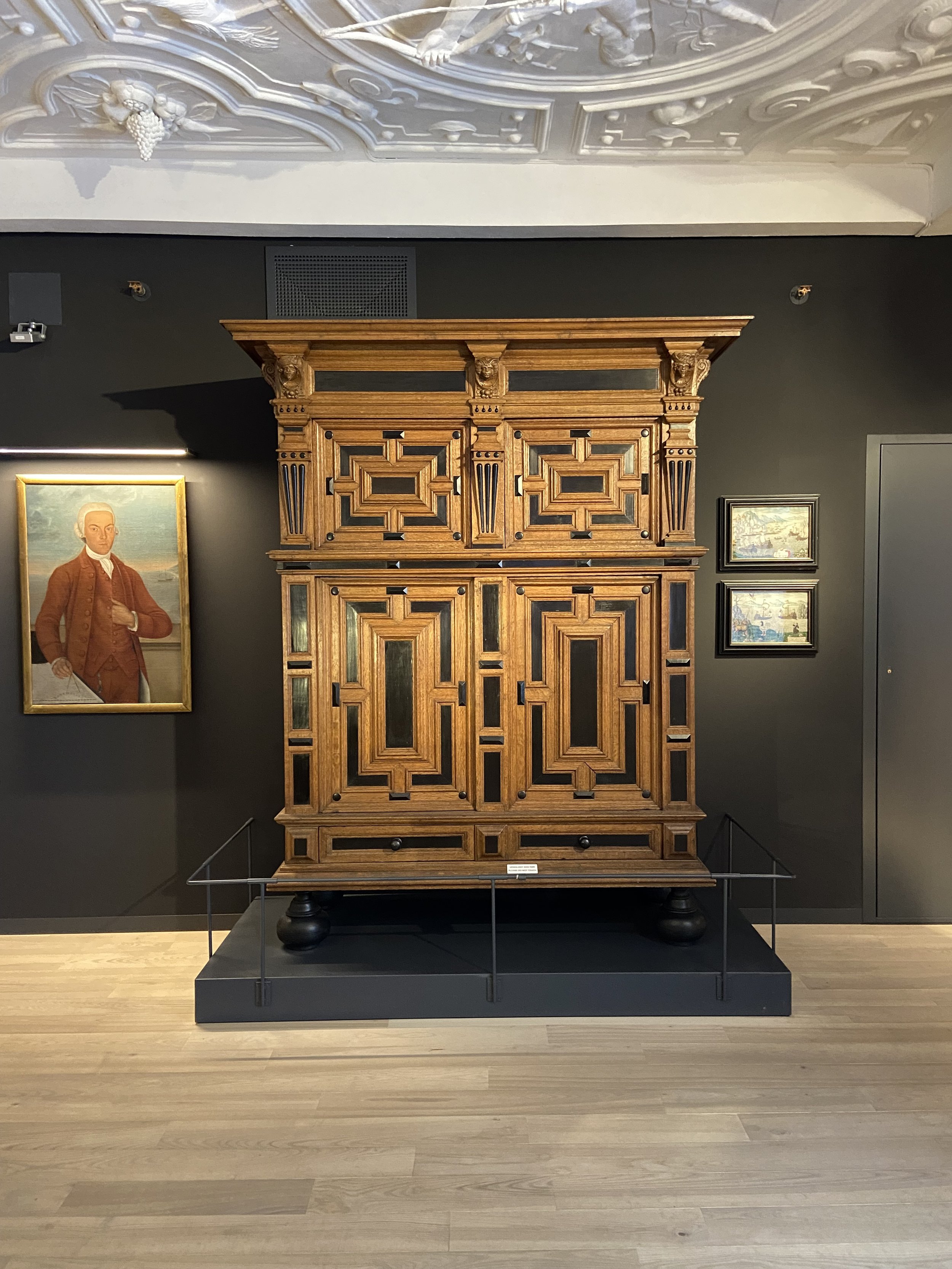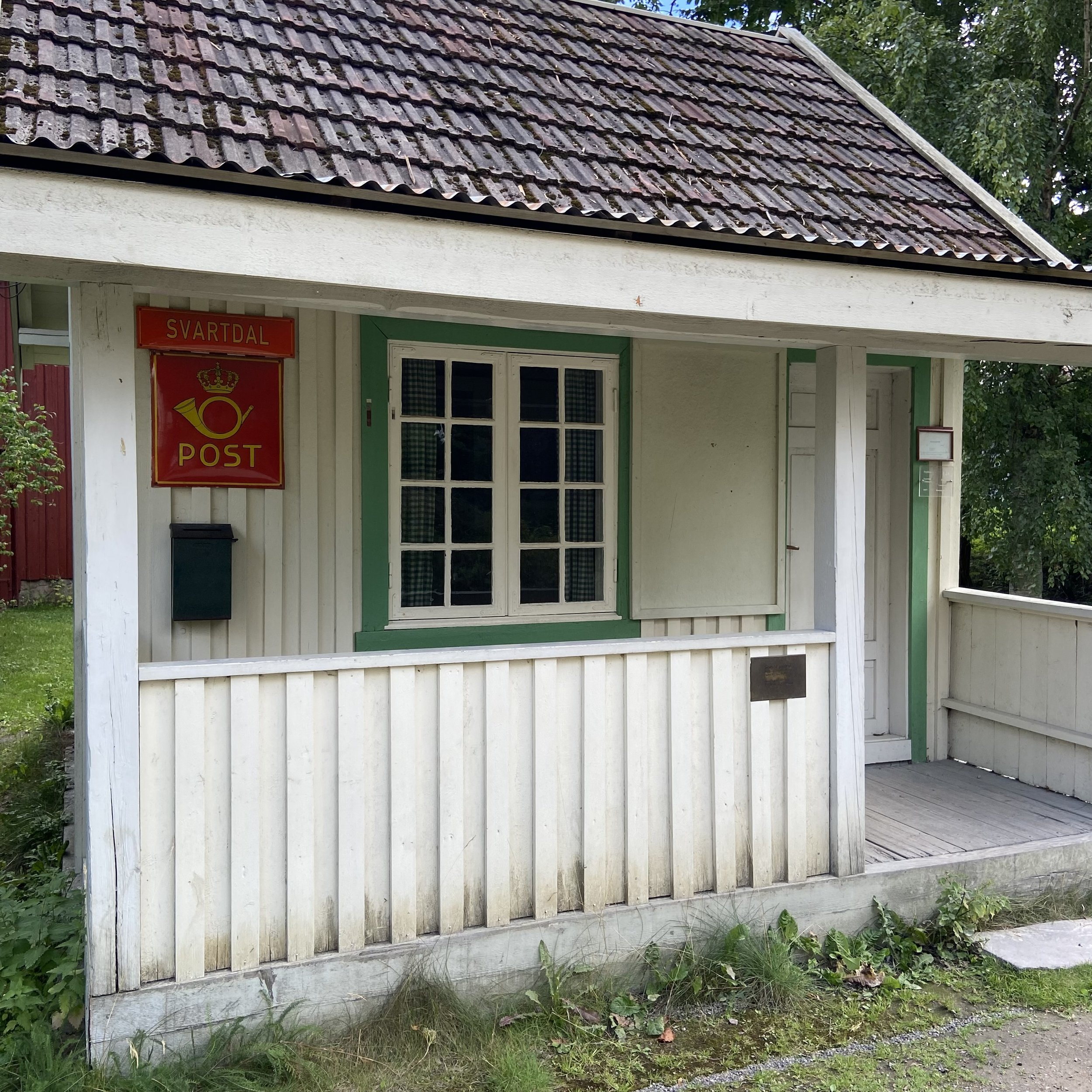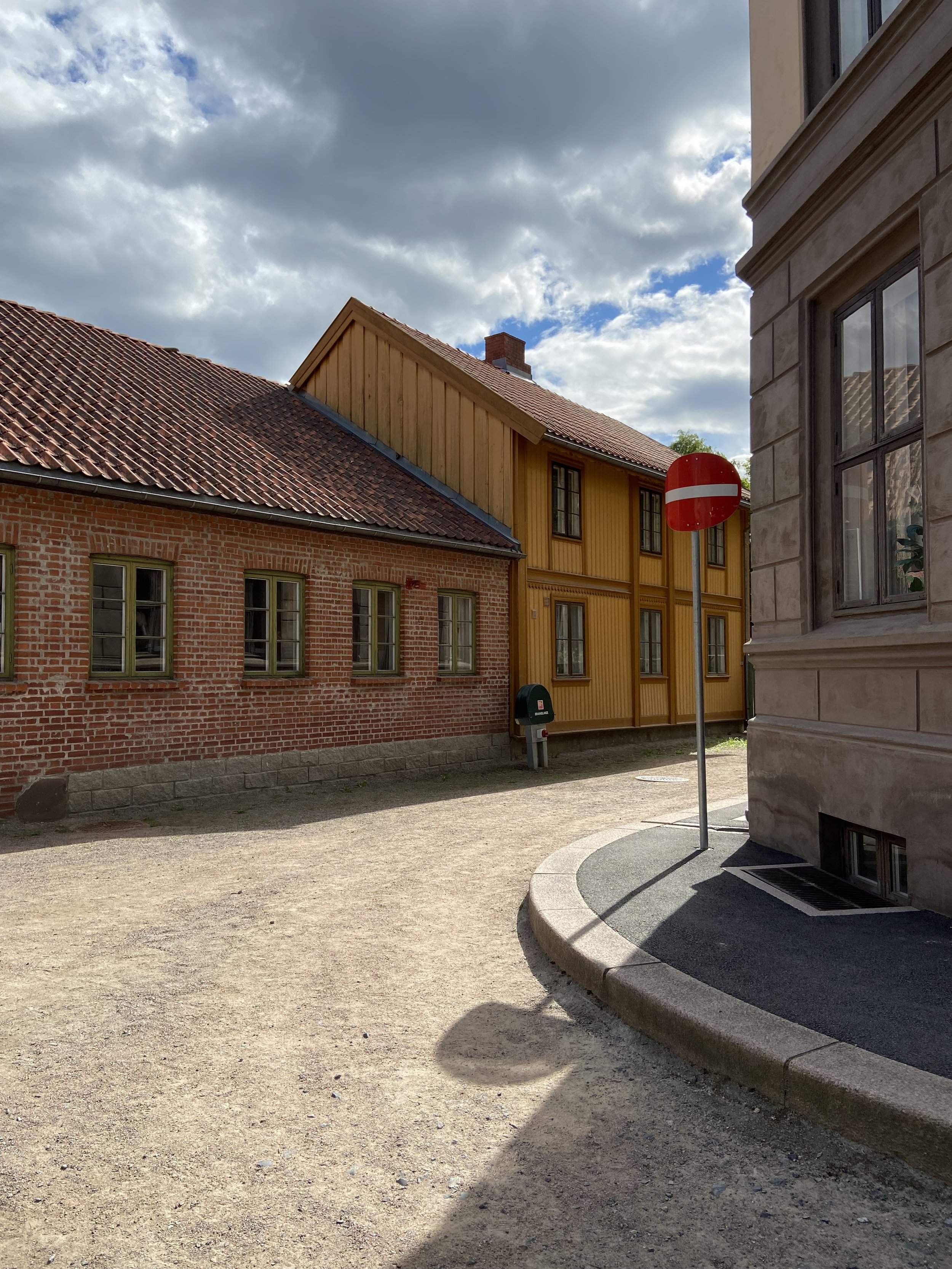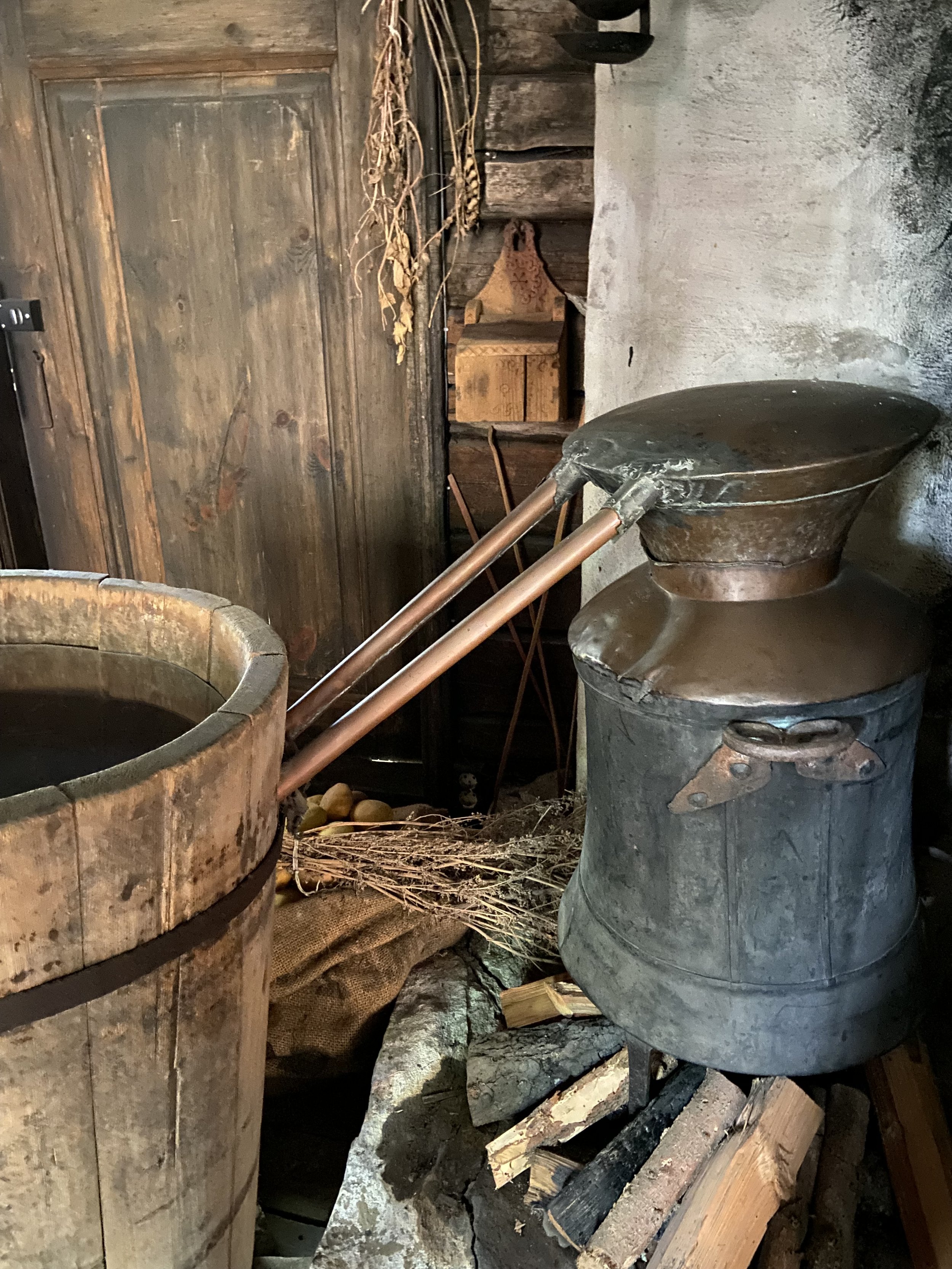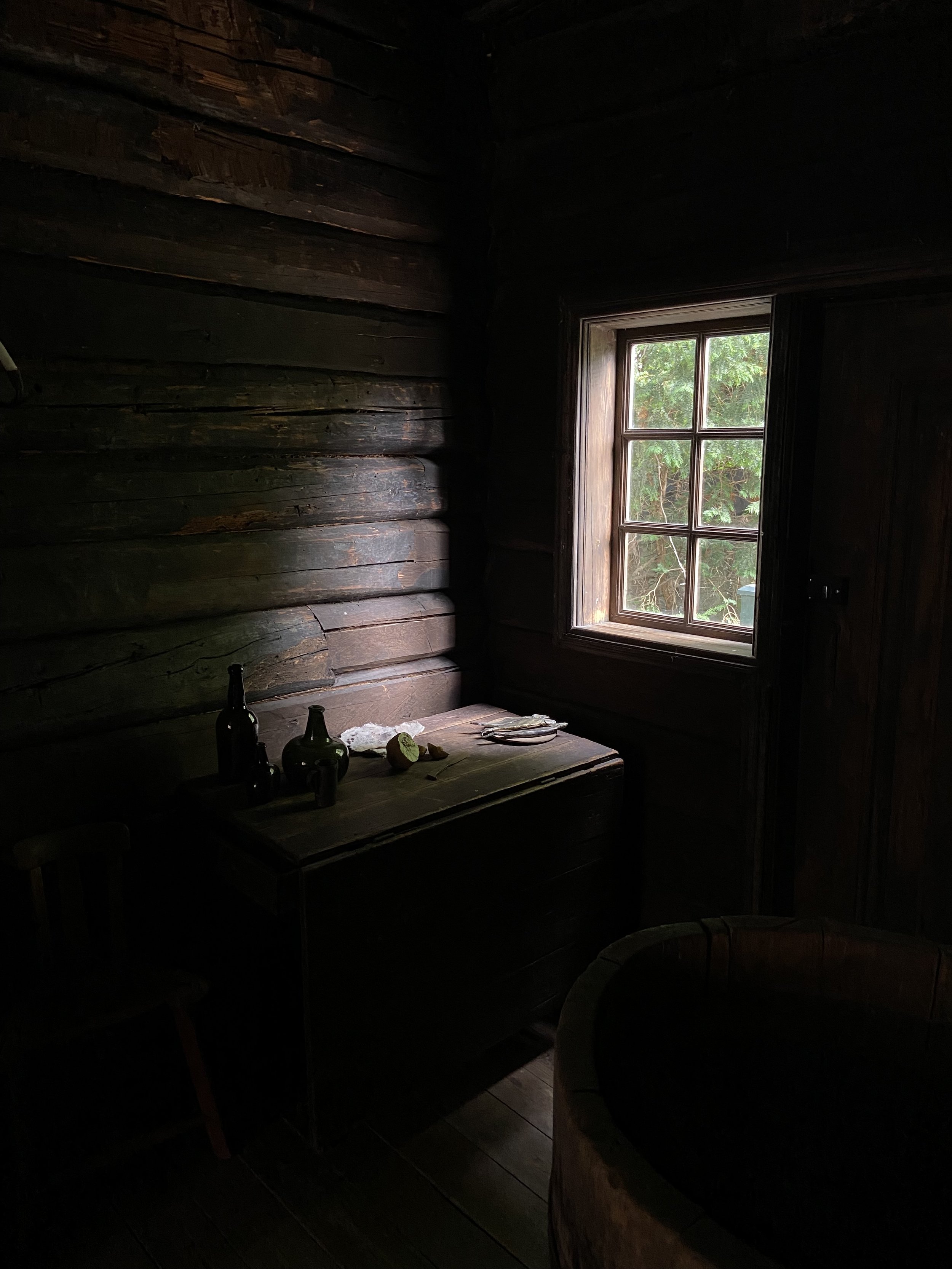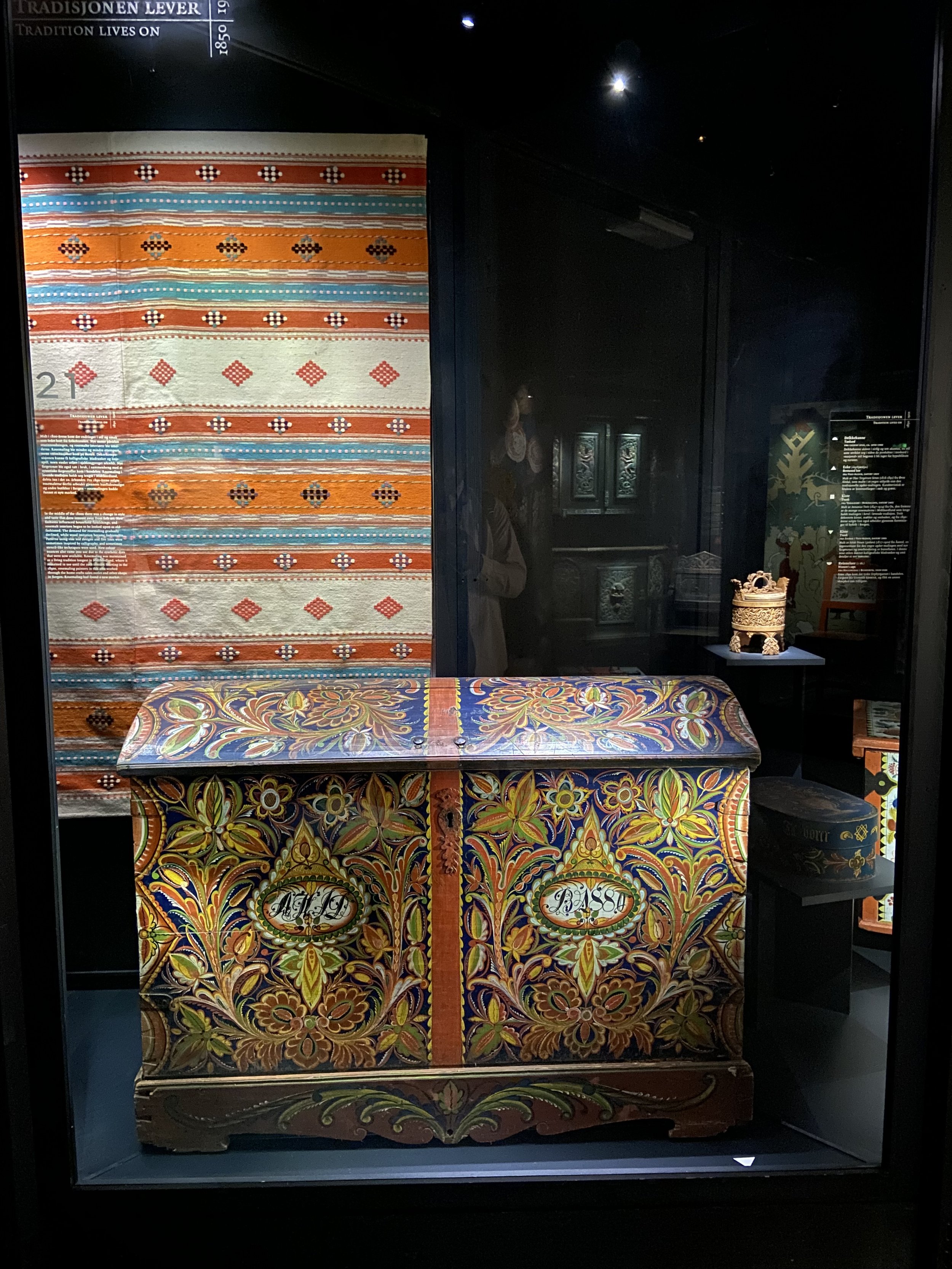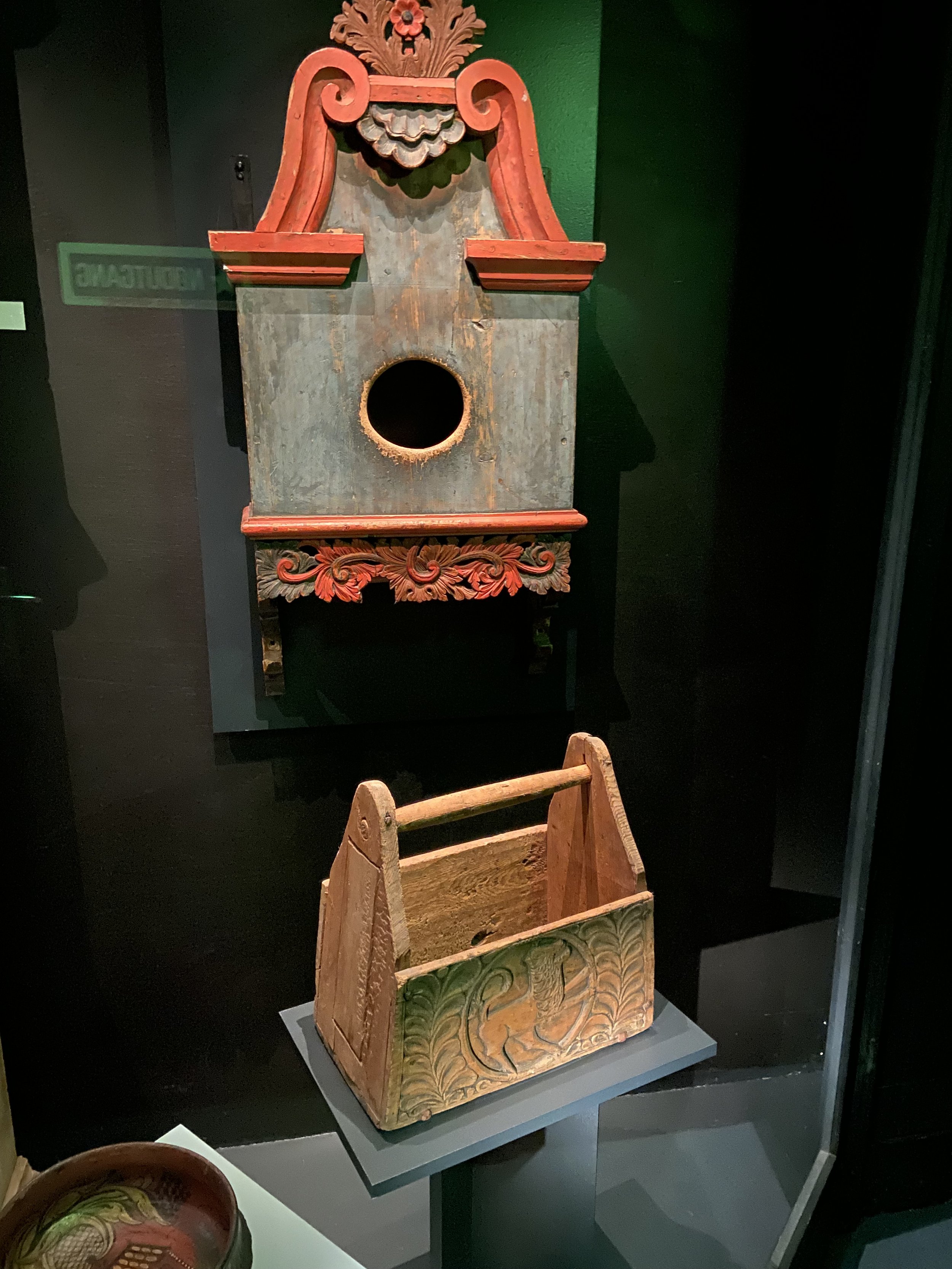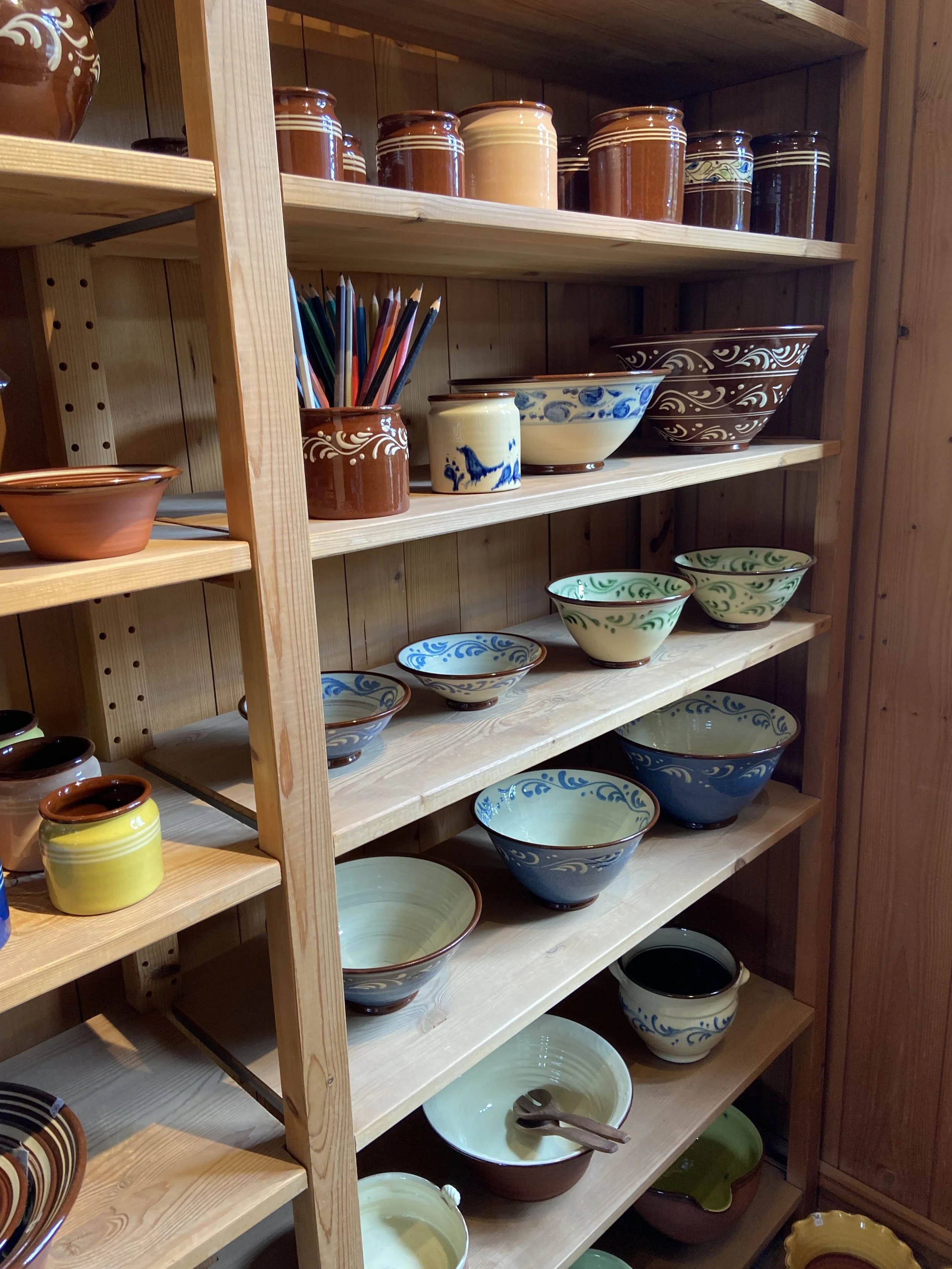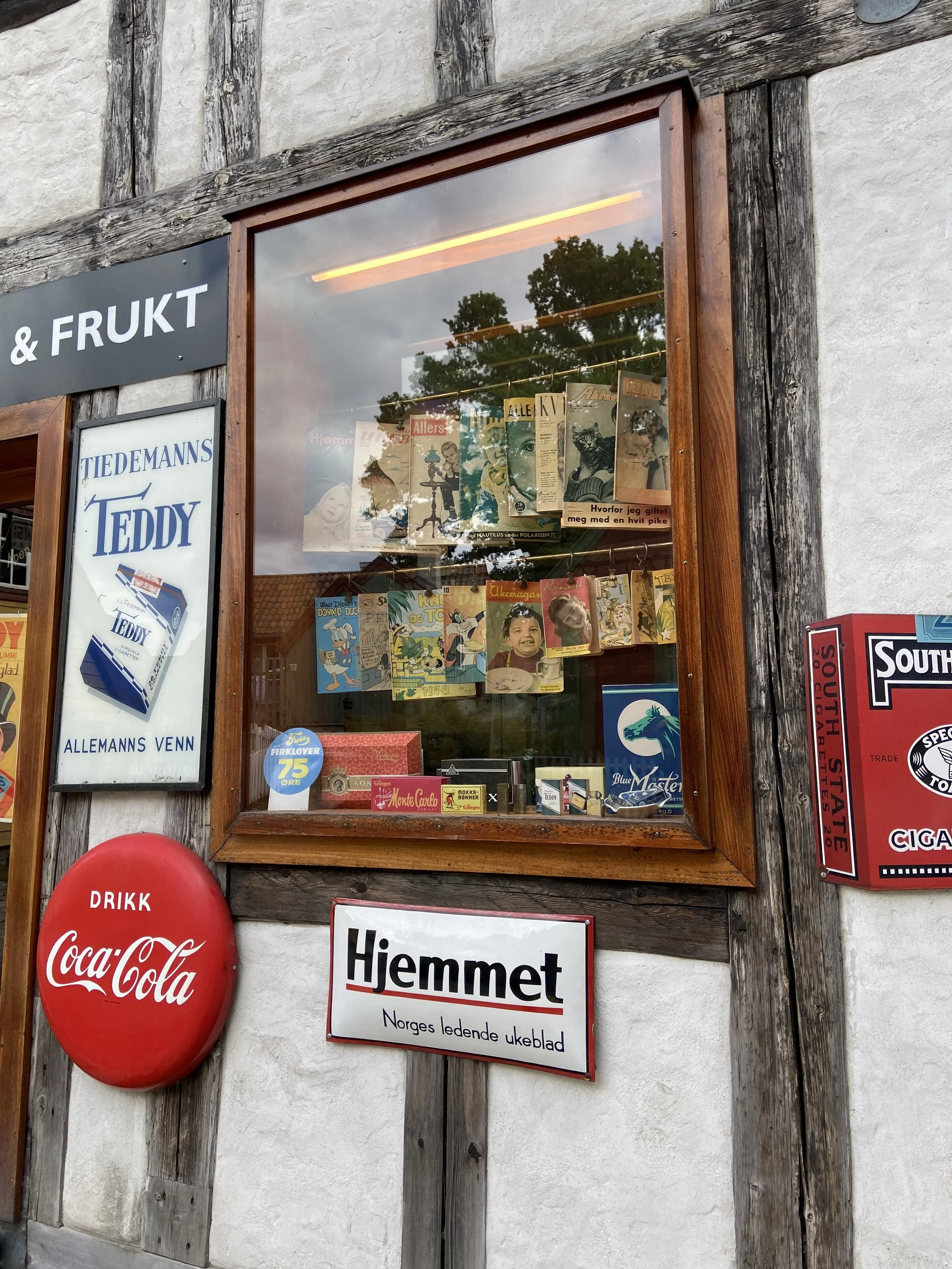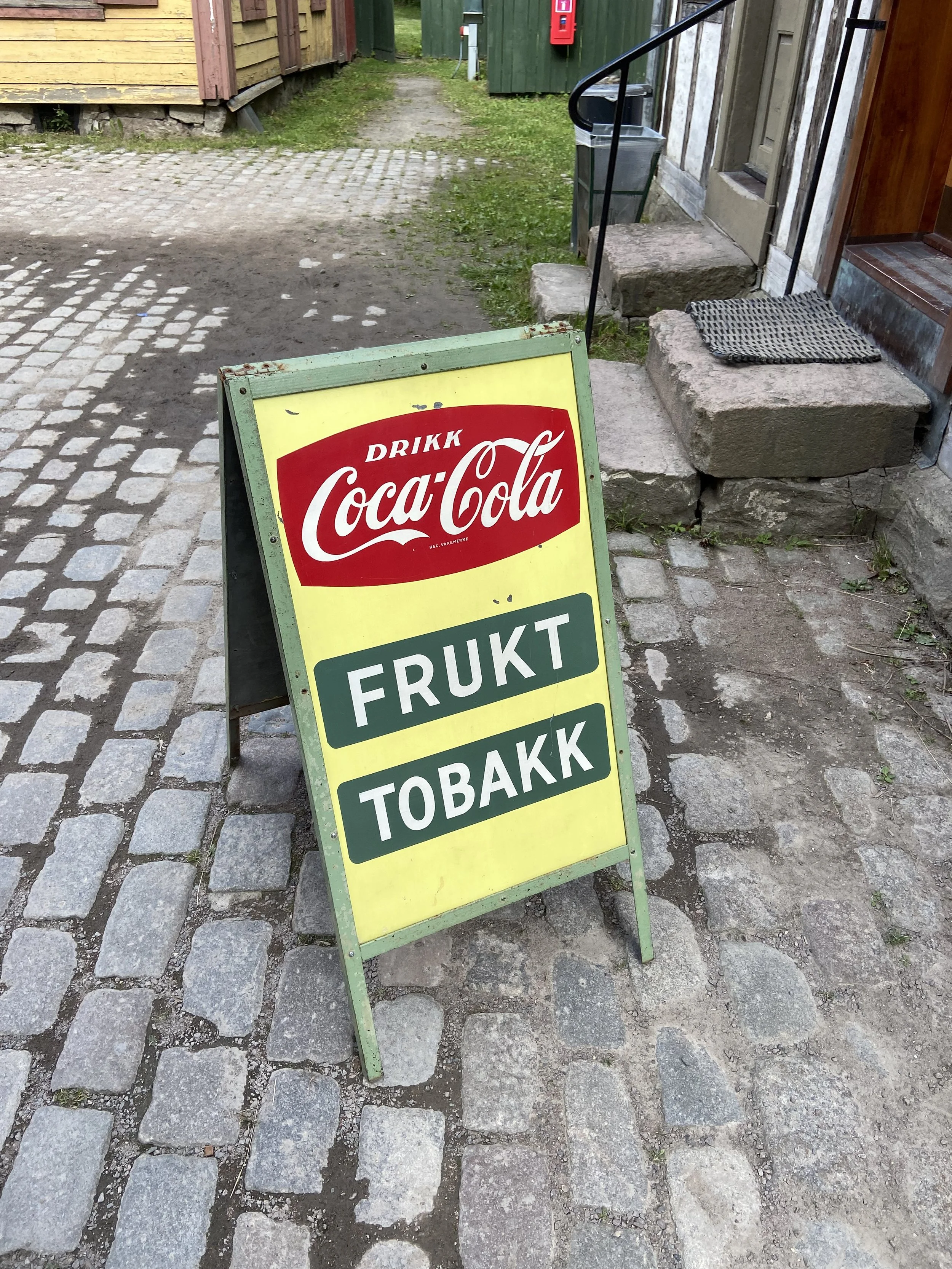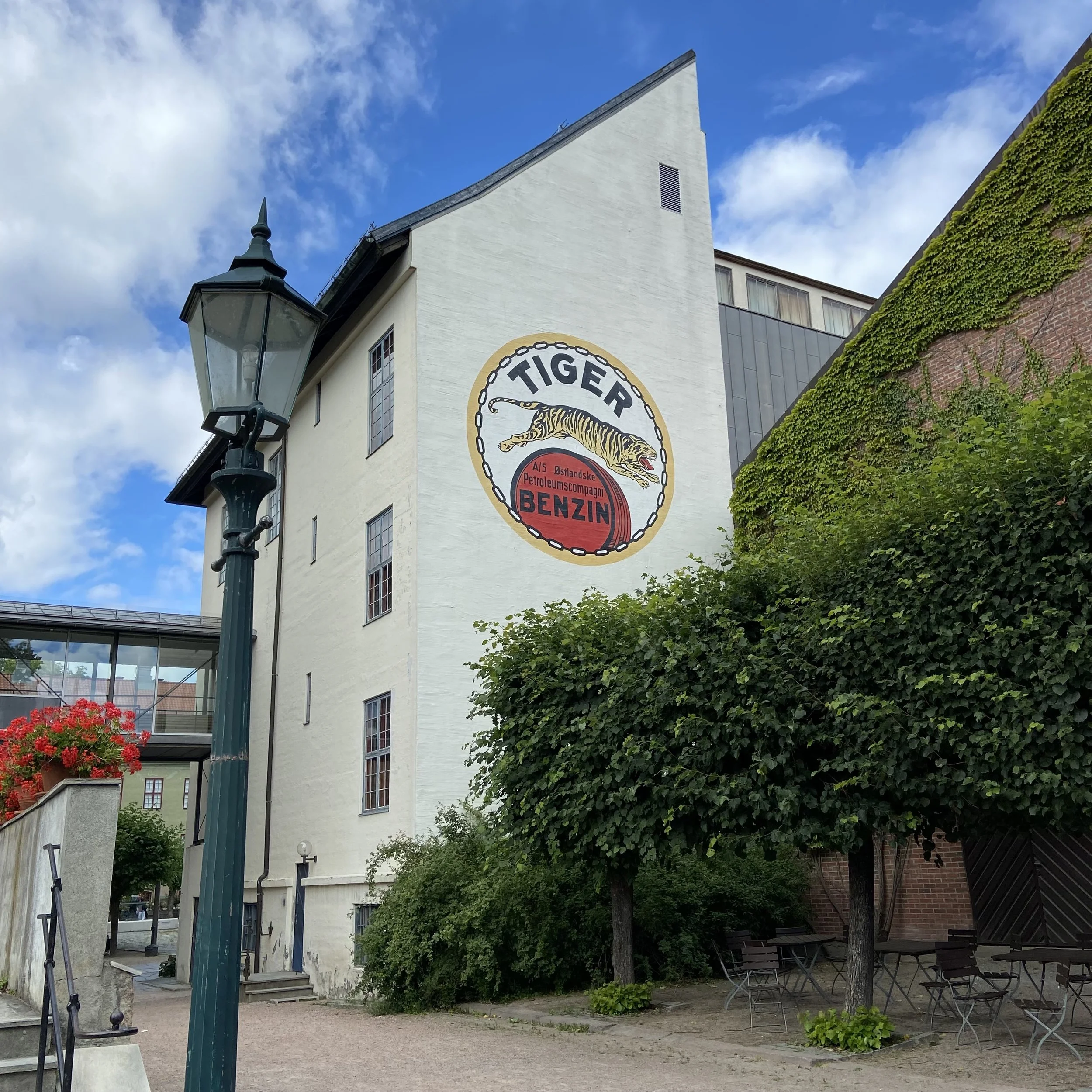IN Travel : Oslo, Norway - PT2
Grünerløkka
On our second day, we found ourselves again in the charming neighborhood of Grünerløkka, where a delightful surprise awaited us: the historic Dælenenga Idrettspark. Established in 1916, this sports facility has stood the test of time and continues to be a popular hub for outdoor and indoor sports enthusiasts, even in the summertime. As we entered the idyllic complex, we were immediately enveloped in an atmosphere of life. The sprawling grounds housed a meticulously maintained football pitch and various buildings, each contributing to the vibrant energy that filled the air. It was evident that Dælenenga Idrettspark was a place where individuals of all ages immersed themselves in the joy of sports, creating a lively and inclusive environment.
Outside of Dælenenga idrettspark sports facility at Grünerløkka in Oslo, Norway.
Adjacent to the sports facility, we discovered Grünerhallen—an indoor ice rink that, although not utilized during our summer visit, added to the charm of the area. Imagining the graceful glides of skaters on the artificial ice, we appreciated the versatility of the space and its ability to provide wintertime entertainment for the local community. Dælenenga Idrettspark is significant in Oslo's heritage, boasting a remarkable sporting legacy that has left an indelible mark. Operated by Grüner IL and embraced by the local community, it is a testament to the passion and dedication of athletes and sports enthusiasts. Whether you're a fan seeking thrilling matches or a history lover intrigued by the stories embedded within the facility's walls, visiting Dælenenga Idrettspark guarantees an unforgettable experience.
One aspect that sets Grünerløkka apart is its walkability and spacious streets. Unlike the bustling cities of America, such as New York, Boston, or California, Grünerløkka offers a rare delight. In this neighborhood, one can stand, take in the surroundings, and relish ample walking room without being constantly jostled by passersby. This sense of tranquility and freedom to explore leisurely adds to the neighborhood's allure and makes it an ideal place to soak in the local atmosphere.It was a stroke of serendipity that led us to Dælenenga Idrettspark—a neighborhood brimming with a vibrant sports culture, rich historical significance, and an inviting atmosphere that truly sets it apart. Grünerløkka captivated us with its fusion of past and present, offering a glimpse into Oslo's storied history while embracing the passions and joys of its vibrant present.
Objekt
As we wandered through the lively streets of Sentrum, the vibrant heart of Oslo, a delightful discovery awaited us: Objekt, a furniture haven born in the spring of 2018 and nestled in the very fabric of the city. Founded by Kjetil Gudem and Preben Mehren, Objekt beckoned us with its understated elegance and a serene color palette that enveloped the entire space, setting the stage for an authentic and remarkable experience. From the moment we stepped inside, we were embraced by the tranquil ambiance, which beautifully reflected the essence of Objekt's meticulously curated collection. The store's interior design, characterized by its simplicity and attention to detail, was a testament to the founders' distinct taste and discerning eye. But it wasn't just the aesthetic that enchanted us—it was the genuine warmth and knowledge of the staff that made our visit unforgettable. Engaging us in captivating conversations, they shared stories of local craftsmanship and the talented Norwegian designers behind the exquisite furniture on display. Each piece seemed to have its tale to tell, infused with the spirit of its creator and the region's rich cultural heritage.
What truly left an indelible impression on us was Objekt's unwavering dedication to sustainability. It was more than lip service; every aspect of the store embodied its commitment to the environment. The fixtures were adorned with eco-friendly materials, and their limited product offerings reflected a conscious effort to discourage excessive consumption and promote responsible purchasing choices.
Objekt stood out as a radiant beacon amidst the bustling city center, seamlessly blending style, craftsmanship, and environmental responsibility. It served as a testament to the visionary spirit of its founders, Kjetil Gudem and Preben Mehren, who had created a sanctuary where design enthusiasts and conscientious consumers could gather, finding solace in the embrace of exquisite furniture and a shared commitment to creating a better world.
While in the Objekt shop, we couldn't resist purchasing a beautiful wool blanket to adorn our living room couch. However, we quickly realized the challenge of packing such a large item into our small suitcase. Though we did make it work, a word to the wise: when traveling, be mindful of the size of the items you purchase.
Norske Grafikere
My wife and I stumbled upon an art gallery during our walk and decided to explore it. Stepping into Norske Grafikere gallery, I felt anticipation and excitement. The space buzzed with vibrant energy as the association proudly showcased works by newly admitted members. The carefully selected talents from the 2010 jury added to the exceptional display. Walking through the exhibit, I admired the diverse printmaking techniques, styles, and expressions. Each artwork reflected the artist's skill and creativity, forming a captivating visual journey. Esteemed artists like Elisabeth Mathisen and Ingebjørg Une Hagen were impressed with their mastery while emerging talents like 21-year-old Julie Tennes brought fresh perspectives and youthful energy.
The exhibition highlighted the remarkable quality of contemporary Norwegian printmaking, showcasing dedication and passion in every piece. It signaled the evolving landscape of printmaking, pushing boundaries and embracing innovation. The association's significant growth in membership demonstrated Norske Grafikere's importance within the artistic community, attracting more artists seeking a supportive and thriving environment. Being immersed in these exceptional artworks, I felt grateful for witnessing the rise of promising names in contemporary Norwegian printmaking. It was a unique opportunity to acquire works from these talented individuals and join their artistic journey. Norway's appreciation for traditional art elements like etching, screen printing, lithography, and photography was evident in the gallery's curation. Discovering this gallery space added a delightful touch to our walk as we made our way toward Pipervika and Oslo City Hall.
Rådhuset
On a beautiful day with the temperature hovering around a perfect 70°F, my wife and I had the pleasure of visiting Rådhuset, which is essentially Oslo's City Hall. It was an interesting tidbit that we discovered that this was the very place where Martin Luther King Jr. received his Nobel Peace Prize in 1964, adding a significant historical context to our visit. As we arrived at Oslo's City Hall, we were immediately drawn to the lively atmosphere that surrounded it. Overlooking the harbor, the area was buzzing with activity. It was evident that many people flocked to this spot to capture special moments with their cameras and immerse themselves in the delightful flower garden located on the city hall grounds.
Taking a seat and indulging in some people-watching for a good ten minutes, we couldn't help but notice the vibrant community of individuals in Oslo who either owned private boats or cherished the charms of the harbor during the summer months when the temperature was far from the chilly 19°F. Observing how the locals embraced the city's beautiful waterfront and found joy in sailing or simply strolling along the harbor's edge was fascinating. The City Hall itself was an impressive sight. Its architecture exuded a sense of grandeur, reflecting the city's rich history and culture: the picturesque location and the pleasant weather made for a truly memorable visit. We soaked in the lively ambiance, the panoramic views of the harbor, and the allure of the flower garden surrounding the City Hall. Our time at Rådhuset it was allowed us to appreciate Oslo's connection to the sea and the vibrant community that thrived along its shores. It was a serene and inviting place where the beauty of nature and the city's history harmoniously merged. We left with a deep appreciation for the city's commitment to preserving its heritage and creating a welcoming environment for locals and visitors alike.
Astrup Fearnley MoMA
ART ON WATER
As a Pisces exploring the Astrup Fearnley Museum of Modern Art alongside my wife, we were in for an extraordinary journey together. The museum, housing a remarkable private art collection, surpassed all expectations and rumors of it being the world's largest private collection added to the intrigue. Upon entering, the monumental taxidermy creations by Damien Hirst immediately captured our attention, setting the tone for an immersive artistic experience shared between us. Designed by the renowned architect Renzo Piano, the museum's three timber-clad buildings, connected by a curving roof of fritted glass, blended contemporary design with traditional Scandinavian aesthetics, infused with a touch of maritime inspiration.
Navigating the complex hand in hand, we discovered ten galleries brimming with diverse artworks, each offering its unique artistic narrative that we admired together. Interestingly, one of the buildings also housed functional office spaces, adding an intriguing dynamic to the artistic ambiance we appreciated as a couple. As we ventured along the promenades lining both sides of the canal, we were greeted by a tranquil sculpture park, a picturesque sandy beach, and a bustling ferry terminal, creating beautiful memories as we explored the surrounding beauty together. It's worth mentioning that Renzo Piano, the brilliant mind behind this architectural masterpiece, has also left his mark on iconic projects such as The Shard and the new wing of the Isabella Stewart Gardner Museum, which further sparked conversations and shared excitement between us, especially since Boston, Massachusetts is my hometown and during my time at Massachusetts College of Art and Design I worked at the Isabella Stewart Gardner Museum as a security guard.
The Astrup Fearnley Museet in Oslo is a renowned private museum that has shaped the city's art scene. Since 1993, it has introduced radical art, featuring works by diverse artists such as Jeff Koons, Cindy Sherman, and Francis Bacon. The museum's forward-thinking acquisitions have influenced critical opinions and contributed to artists' success. With an upcoming sale of Francis Bacon's Triptych Inspired by the Oresteia of Aeschylus, the museum aims to expand its collection and maintain its commitment to education and patronage. Norway's commitment to art funding and inclusive public education is a remarkable aspect worth delving into further.
Given the extensive presence of Damien Hirst's works in the Astrup Fearnley Collection, it was evident that he holds a significant position within the collection. Hirst has achieved international acclaim as a key figure in the Young British Artist movement. The exhibition at Astrup Fearnley Museum offered a comprehensive overview of Hirst's artistic journey, spanning the past two decades and showcasing his unique style and themes. We found Hirst's work to be bold, audacious, and thought-provoking.
Despite initial reservations about exploring the anatomy of deceased animals, the way his artworks are displayed allows for a shift in perspective, inviting deeper exploration of both the artwork itself and its underlying concepts. When immersed in Hirst's creations, my mind is filled with a whirlwind of thoughts and emotions, creating a truly captivating and reflective experience.
Works by Mari Slaattelid, a Norwegian artist born in 1960. One notable piece is "Read My Lips" from 2002. This artwork uses lacquer on perforated aluminum, with each panel measuring 256 x 125 cm. The Astrup Fearnley Museum proudly showcases these captivating works by Mari Slaattelid, adding to the diverse range of artistic expressions within their collection.
During our first trip to Norway, after spending three years mostly confined to our home during the pandemic, we were captivated by Vibeke Tandberg's artworks. Her series "Living Together" resonated deeply with us. The C-prints depicted everyday moments like watching TV and sleeping, featuring two versions of the same woman. It was fascinating to see Tandberg herself in these digitally manipulated photographs, adding a personal touch. The images were diary-like, capturing intimate scenes that wouldn't typically become albums. Tandberg's ability to blur the line between public and private made us reflect on the complexity of human experiences. These artworks felt incredibly relatable, like snapshots from the pandemic. They reminded us of the universal nature of our emotions and the powerful connection that art can create.
Sigmar Polke
Apparizione (1-3)
The trip to the Astrup Fearnley Museum of Modern Art felt like a serendipitous affair as if the universe had conspired for us to experience its captivating wonders. From the moment we stepped inside, we were amazed by the vibrant and harmonious use of orange and green throughout the museum. It was as if we had unknowingly matched the museum's distinct color palette, effortlessly blending in with the artistic environment. As designers ourselves, our hearts were set racing by the meticulous attention to detail in every aspect of the museum. Even the practicality of the storage lockers caught our eye; their design seamlessly mirrored our carefully chosen attires. It was a delightful fusion of style and functionality, a beautiful testament to the inherent artistry in even the most mundane aspects of life.
We encountered great visual delights with every step we took that left us in awe. For instance, the bathroom tiling became a topic of animated conversation as we marveled at its unique and captivating patterns. This tiny but significant detail further solidified our admiration for the museum's commitment to design excellence. The Astrup Fearnley Museum of Modern Art seemed to grasp the power of immersive aesthetics, creating an environment where the structural and artistic elements blended seamlessly.
Michael Jackson and Bubbles by Jeff Koons
Soraya from The Zarin Series created by the artist Shirin Neshat
It showcased not only the brilliance of the exhibited artworks but also the genius of the museum's overall design. As we explored the various galleries, we felt a profound sense of connectedness to the space. Each exhibit was thoughtfully curated, guiding us through a visual narrative that spoke directly to our creative sensibilities. Whether it was the ingenious use of light, the careful placement of sculptures, or the bold juxtaposition of colors, everything seemed purposefully designed to captivate and inspire. Our trip to the Astrup Fearnley Museum of Modern Art was much more than a visit to view masterpieces. It became an immersive experience, enveloping us in a world of color, design, and untapped inspiration. We left the museum feeling invigorated, with a renewed passion for our craft and a deep appreciation for the power of art and design.
The High Priestess, Zweistromland by Anselm Kiefer
Untitled by Frida Orupabo
Norwegian Museum of Cultural History
After a morning at the captivating Astrup Fearnley Museum, we ventured to the Norwegian Museum of Cultural History. This remarkable museum boasts a collection of regional artifacts, delving into Norway's early history. With 160 buildings in its Open-Air Museum, showcasing diverse regions, periods, and social classes, it provides a comprehensive glimpse into Norwegian heritage. Notably, the medieval Gol Stave Church, dating back to 1200, stands among its architectural treasures.
Inside, the museum presents permanent exhibitions on folk art, folk costumes, toys, and the vibrant culture of the Sámi people. The Sámi, an indigenous group residing in parts of Norway, Sweden, Finland, and Russia, possess their language, rich traditions, and a deep connection to reindeer herding and hunting. Their distinctive clothing, crafts, music, and storytelling contribute to their cultural tapestry. Norway actively supports Sámi culture through various preservation initiatives and endeavors to address the socio-economic disparities they face today. The Norwegian Museum of Cultural History offers a fascinating exploration of the country's past and a meaningful appreciation of the living heritage within its borders.
The Norwegian Museum’s maker Shop was a nice surprise as well. As two makers of things ourselves, we were quite fascinated by the shop that offers a glimpse into the past through its diverse exhibits on trade and transportation. Inside the museum, visitors can enter a grocery store from around 1900, where they can experience the ambiance and products of that era. Nestled within the museum, a delightful small tobacco shop, dating back to 1958, added to the charm of the experience. As we stepped into the tobacco shop, an enchanting assortment of unfamiliar brands, vintage magazines, and more greeted us. Each carefully curated item worked like a time machine, effortlessly whisking us away to Norway's mid-20th century essence. The evocative scent of this meticulously crafted collection of replicated artifacts evoked memories of my sister and I exploring my mom’s attic in the summers, sifting through cherished family heirlooms.
